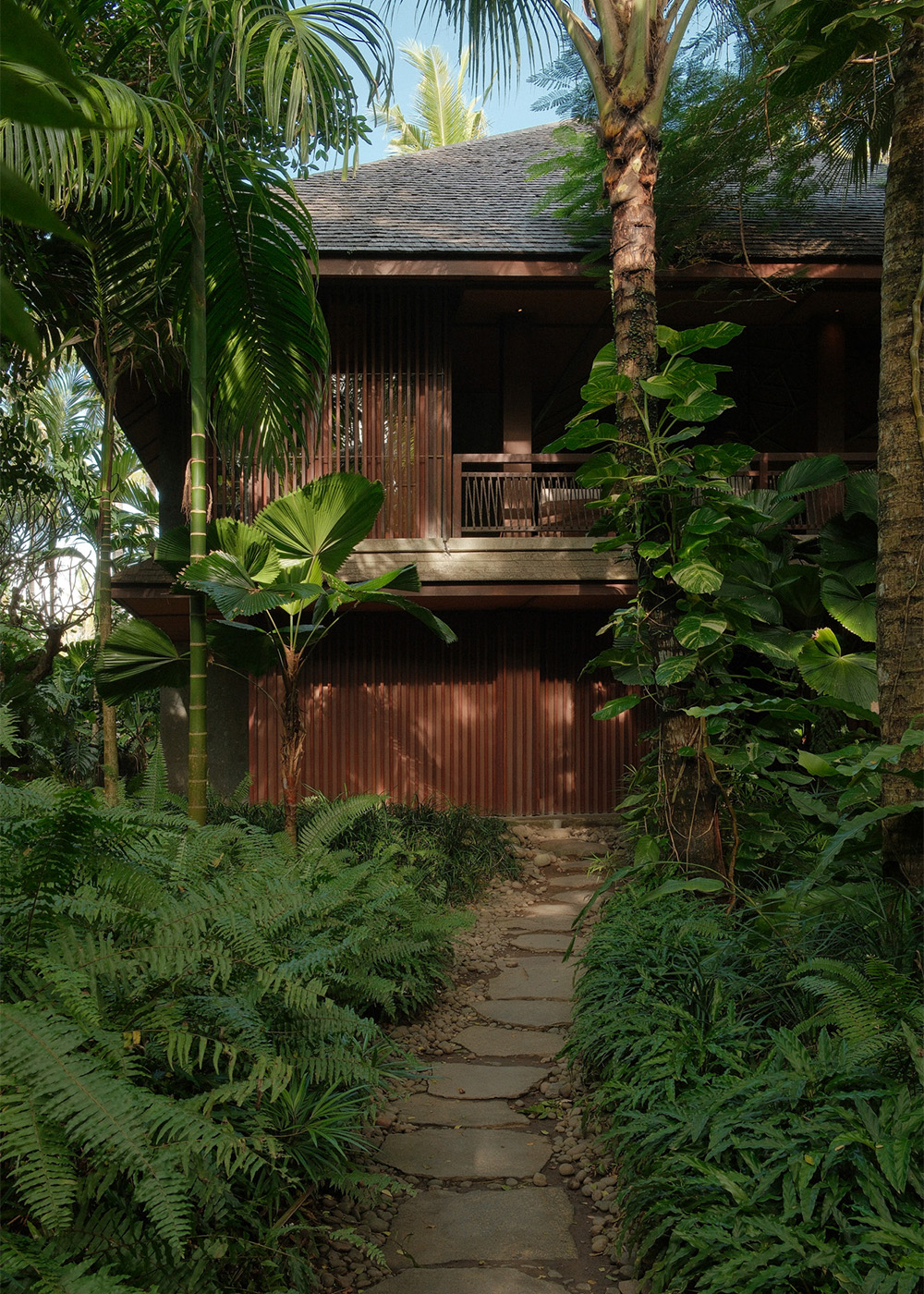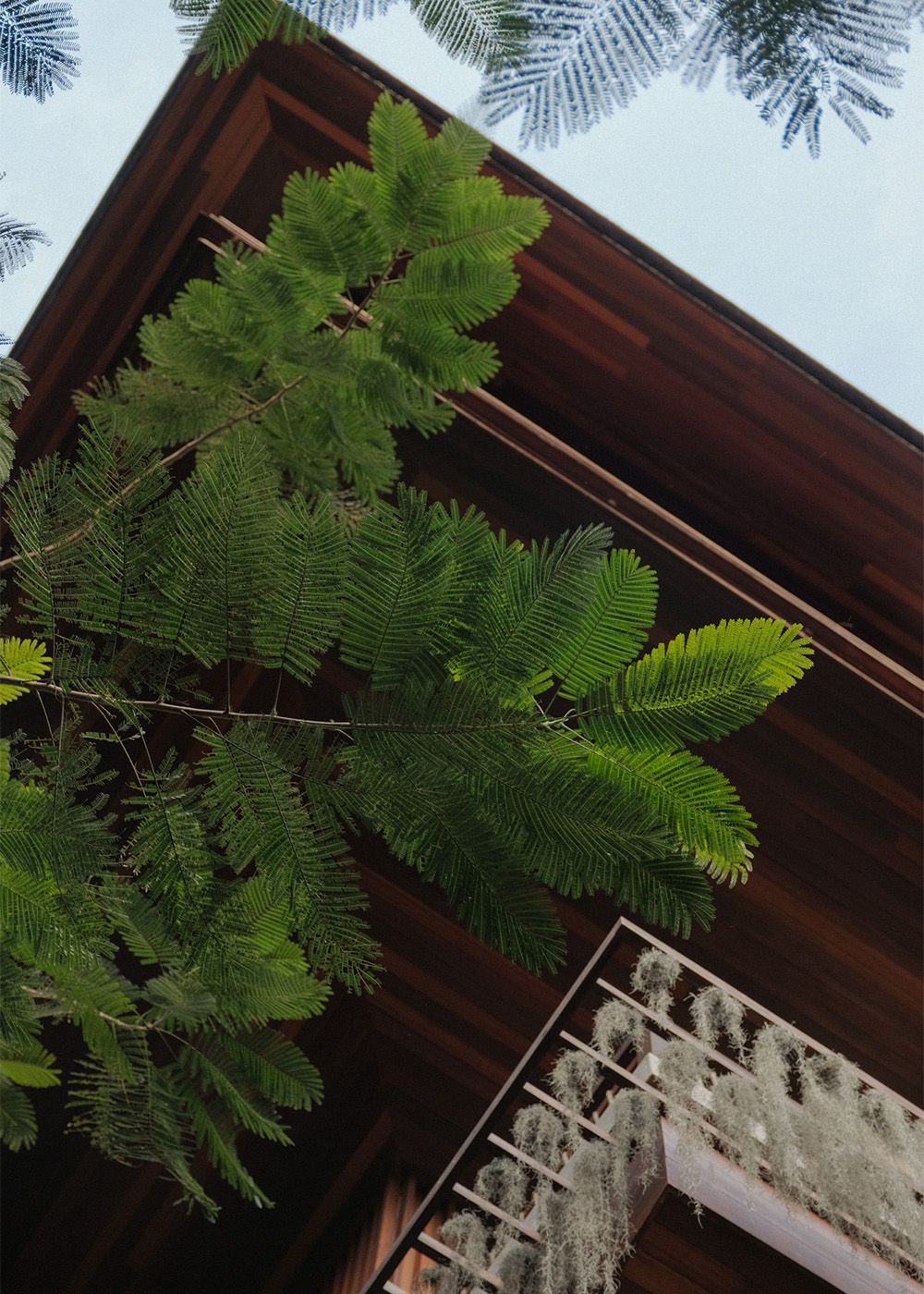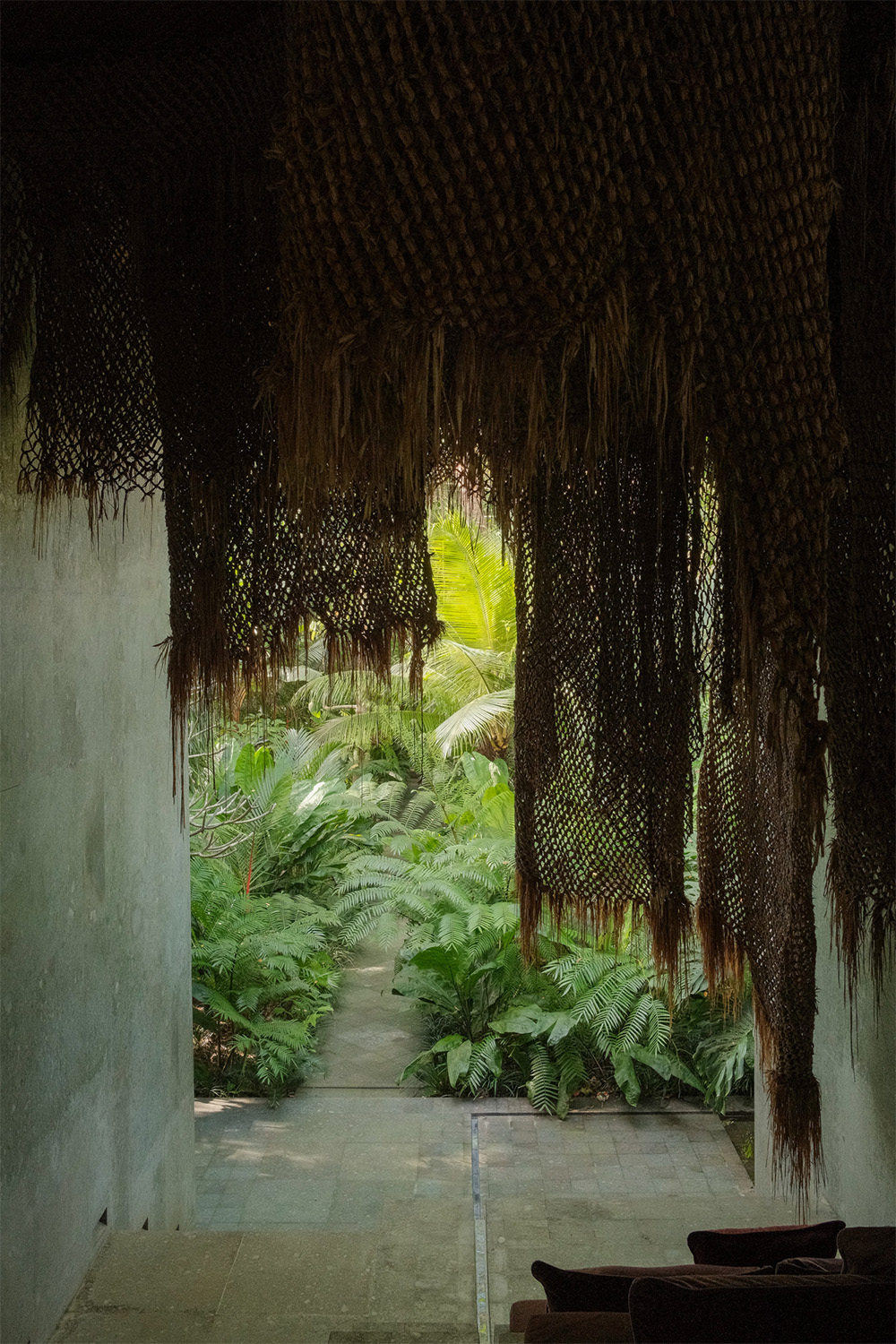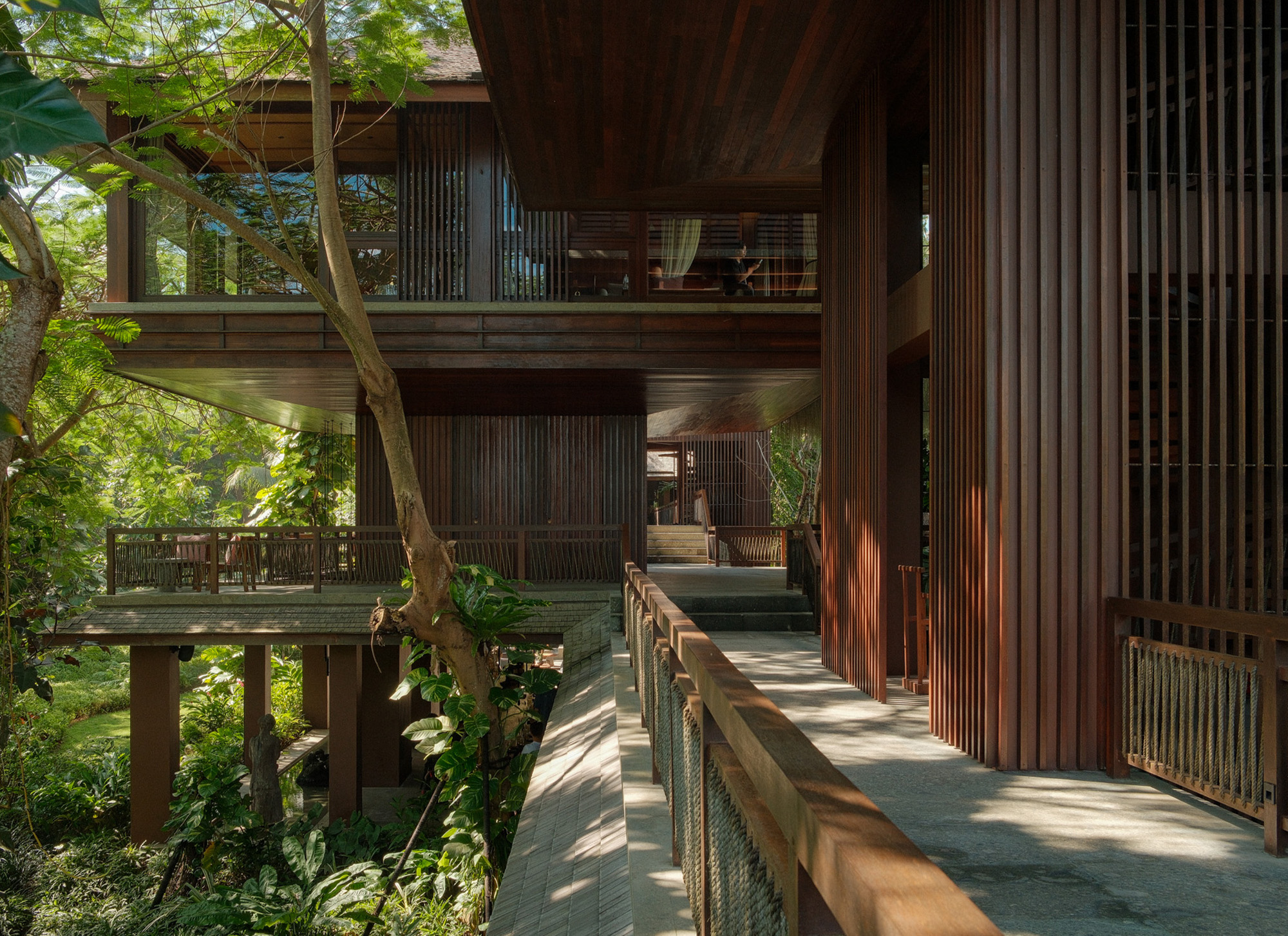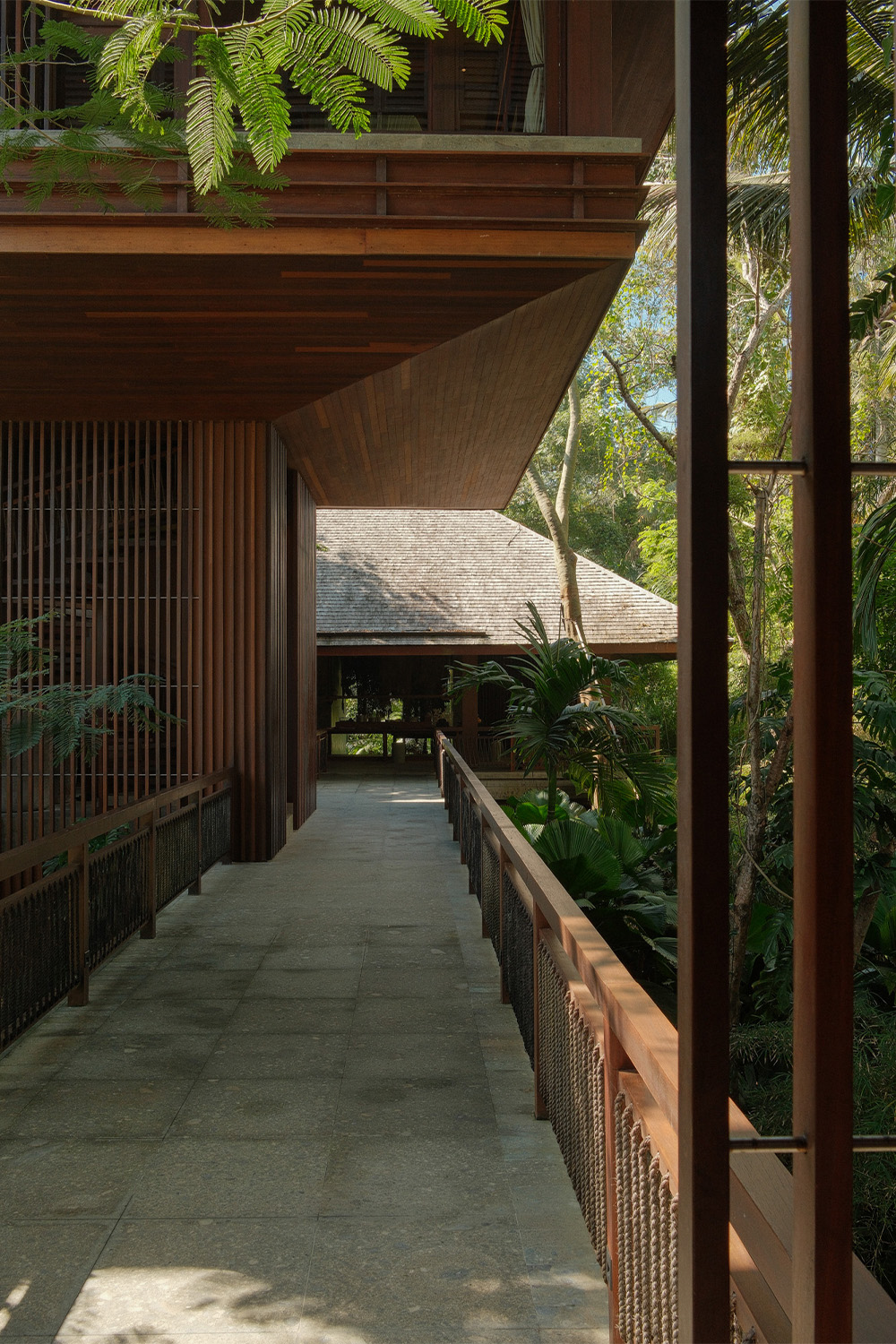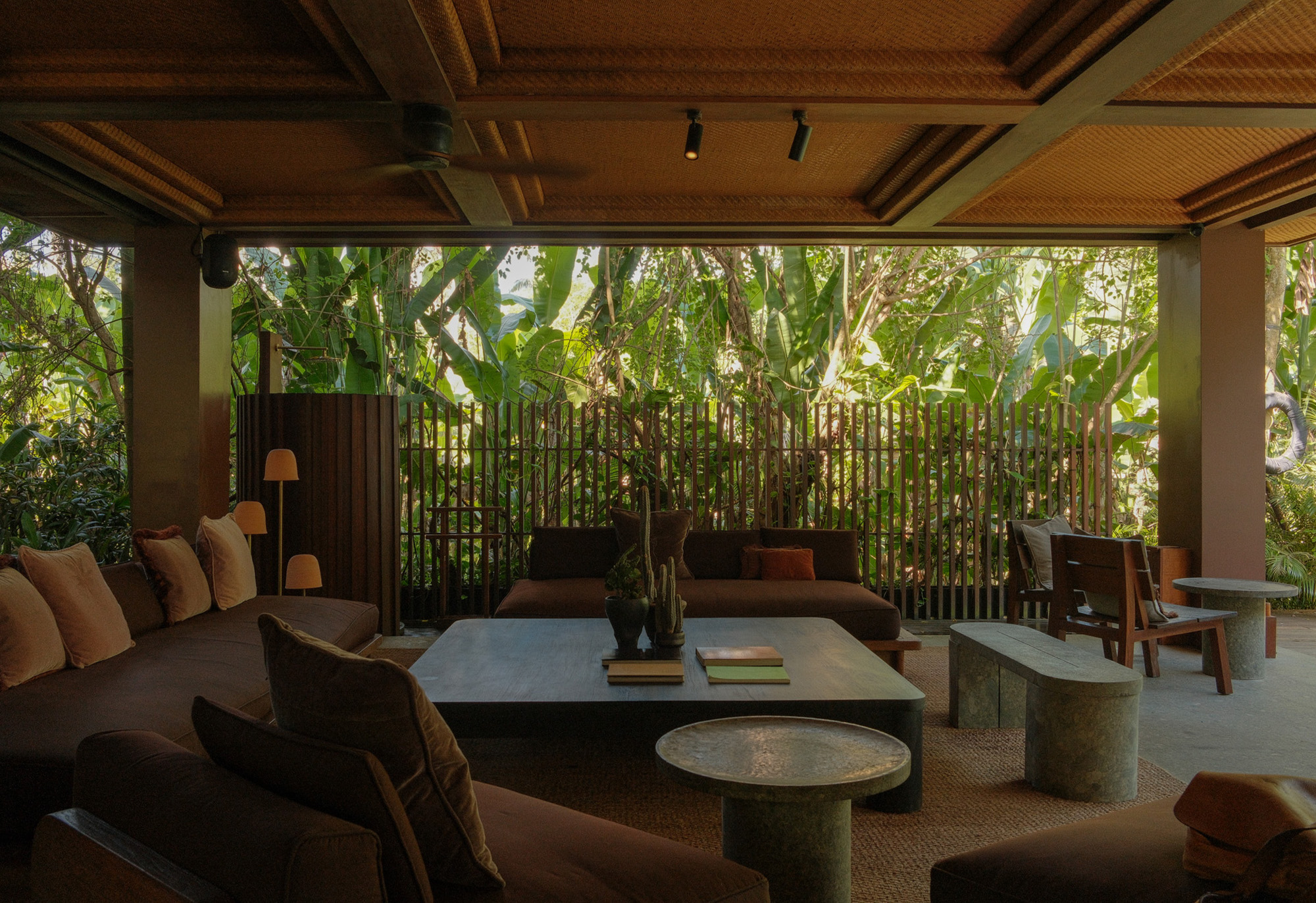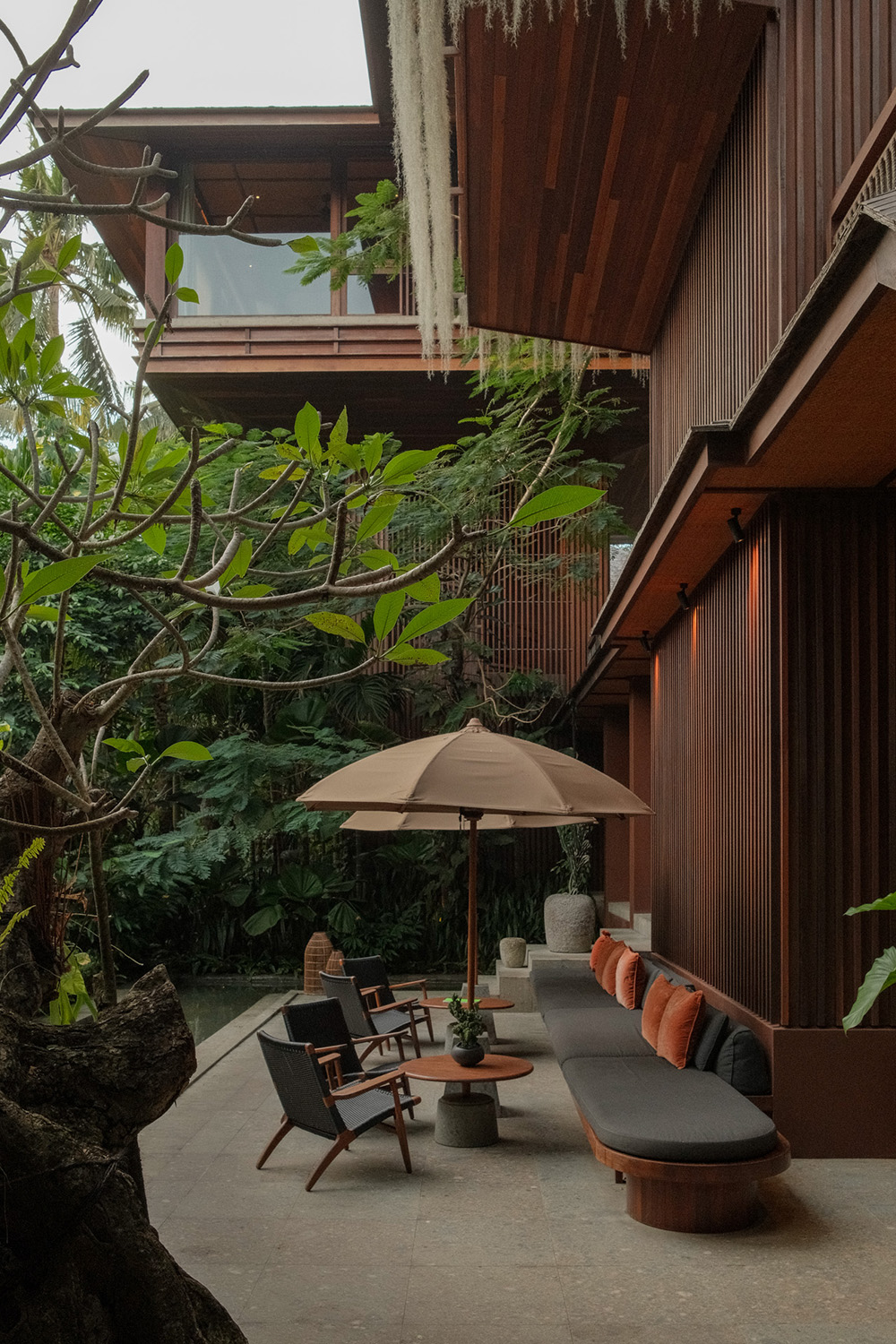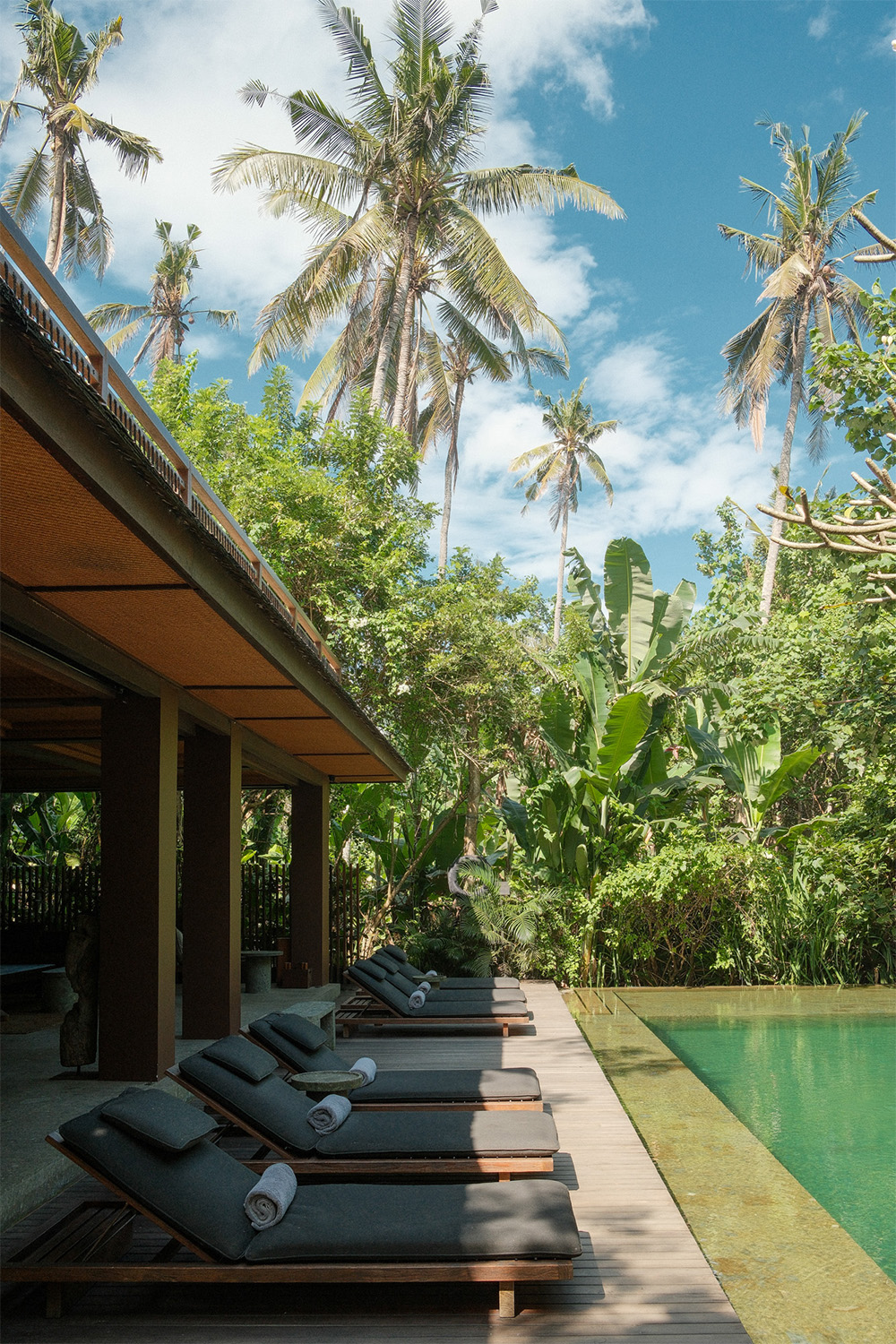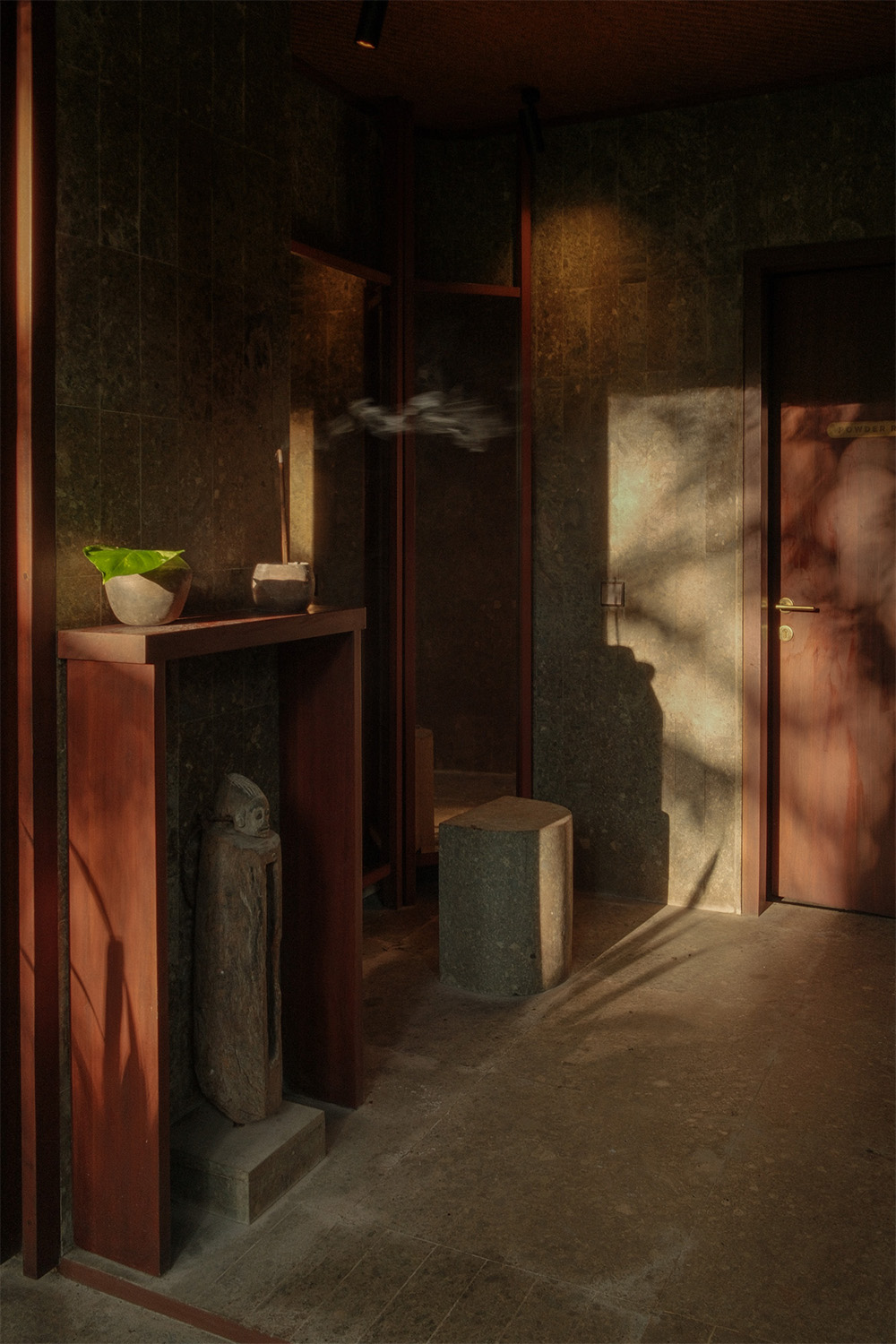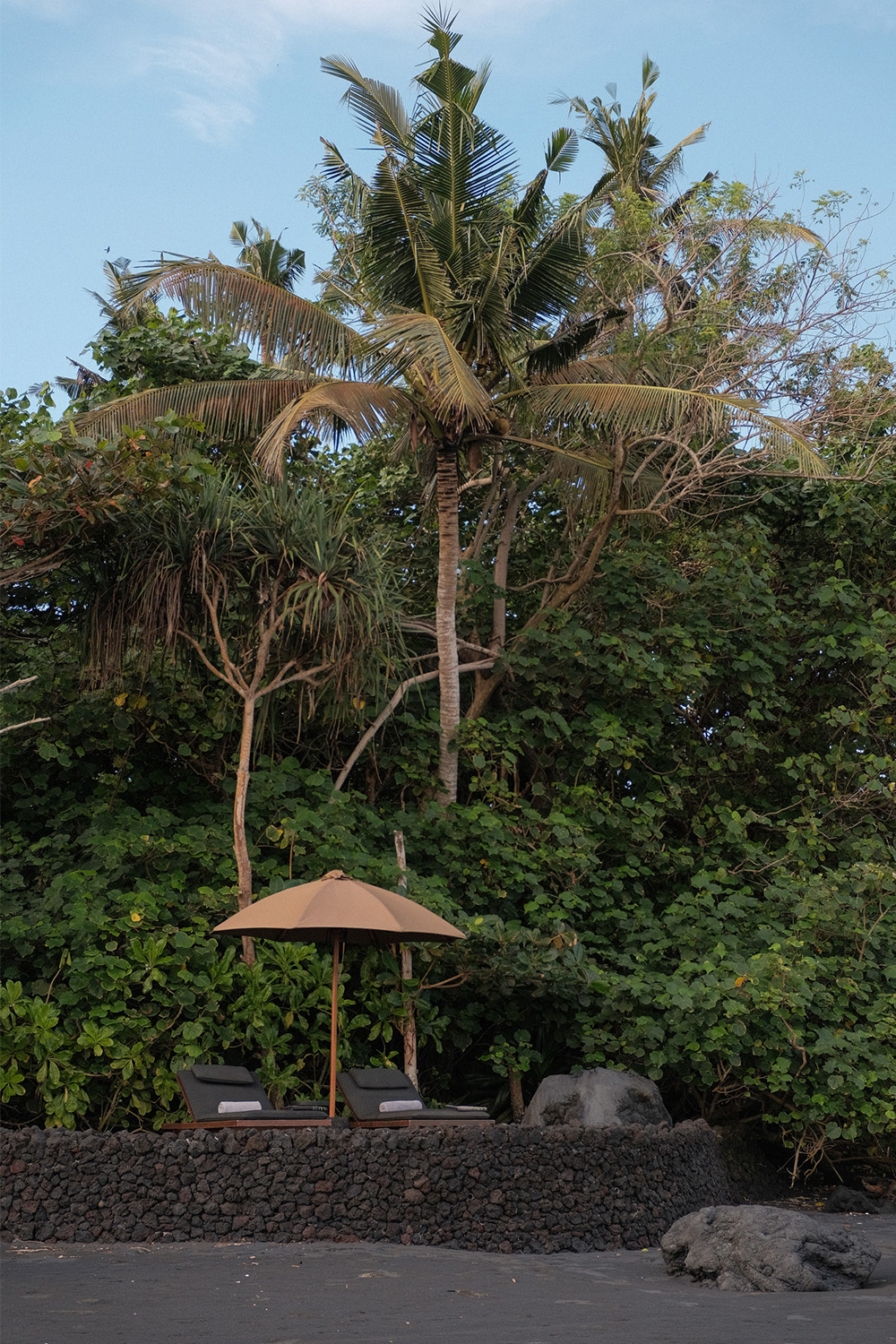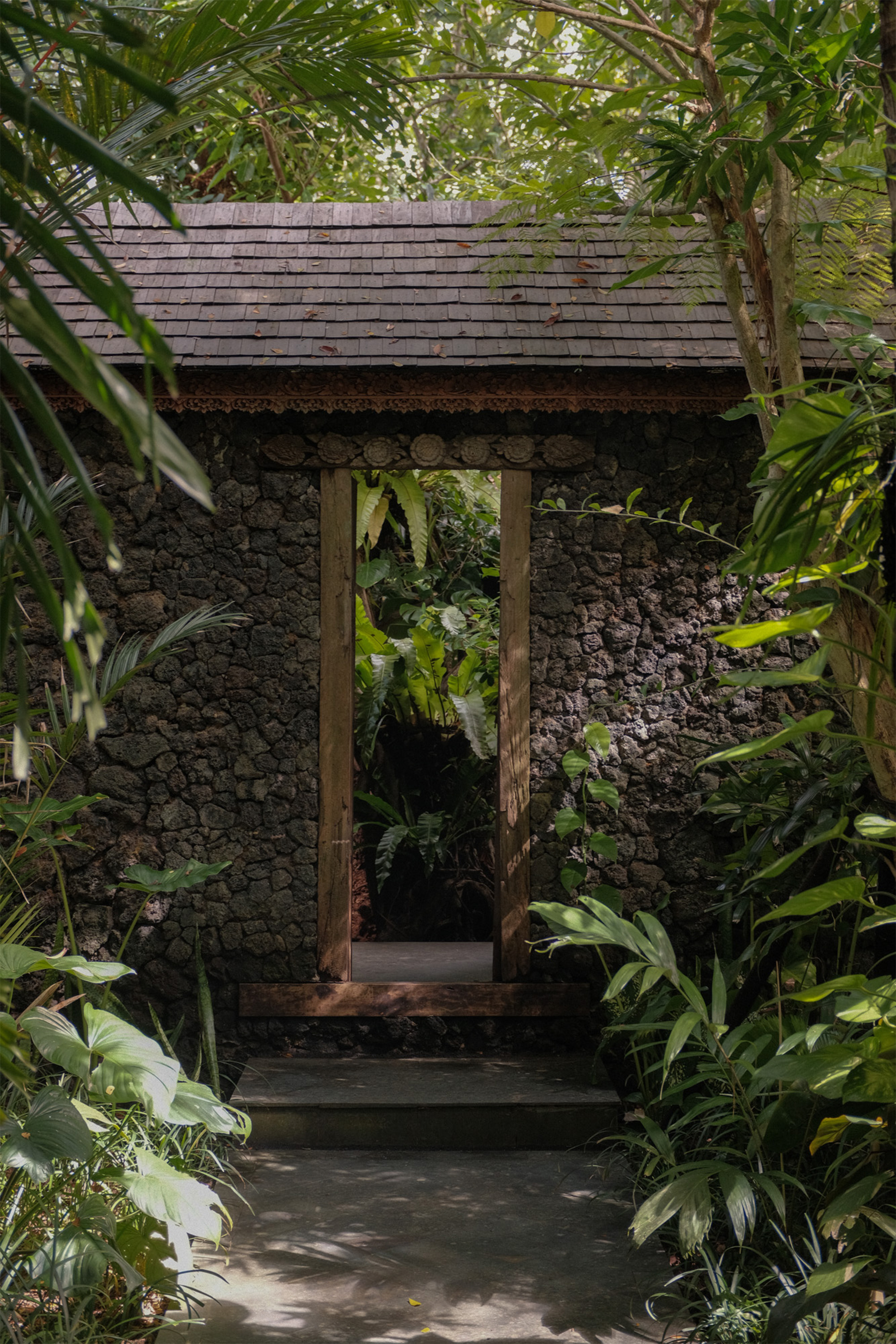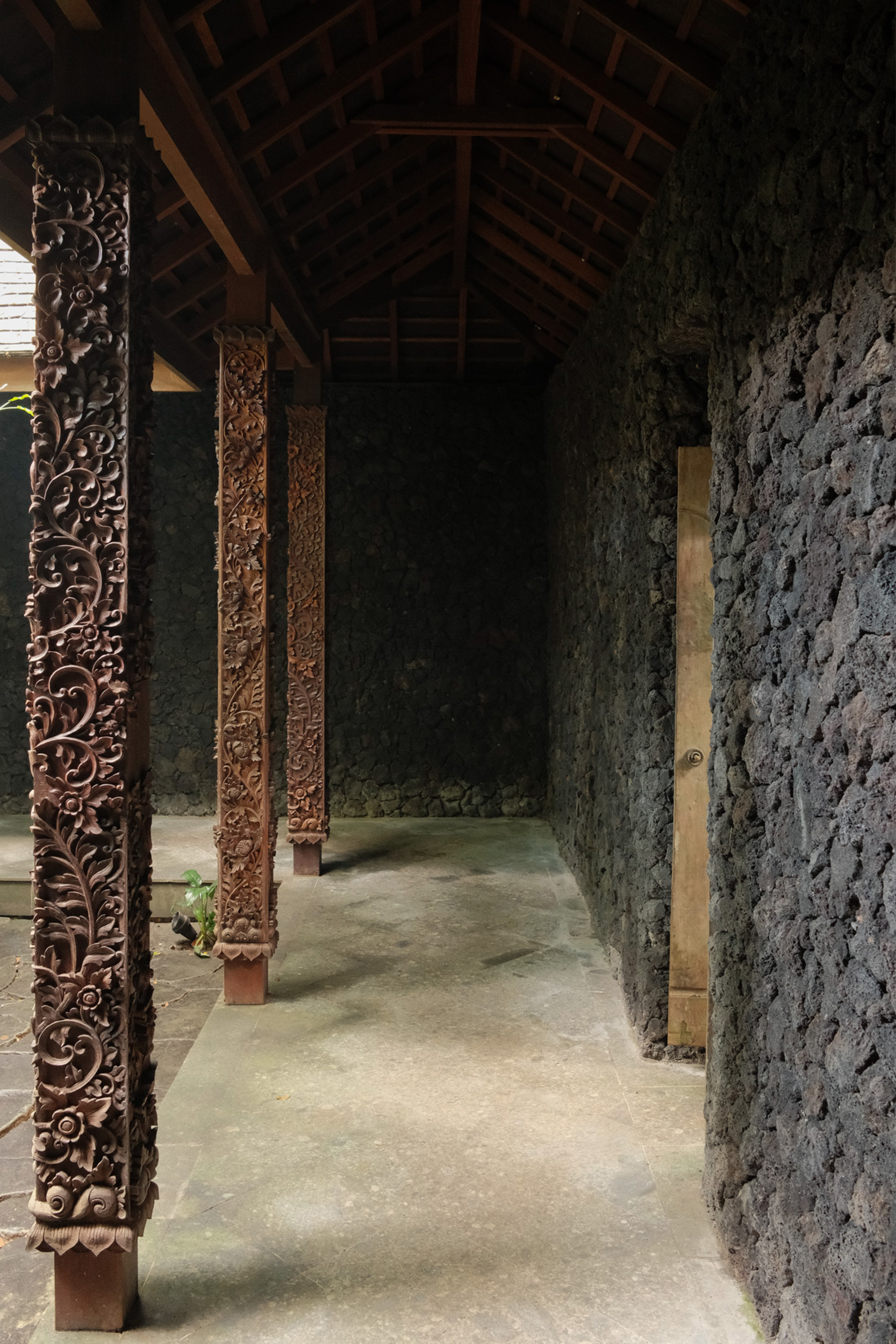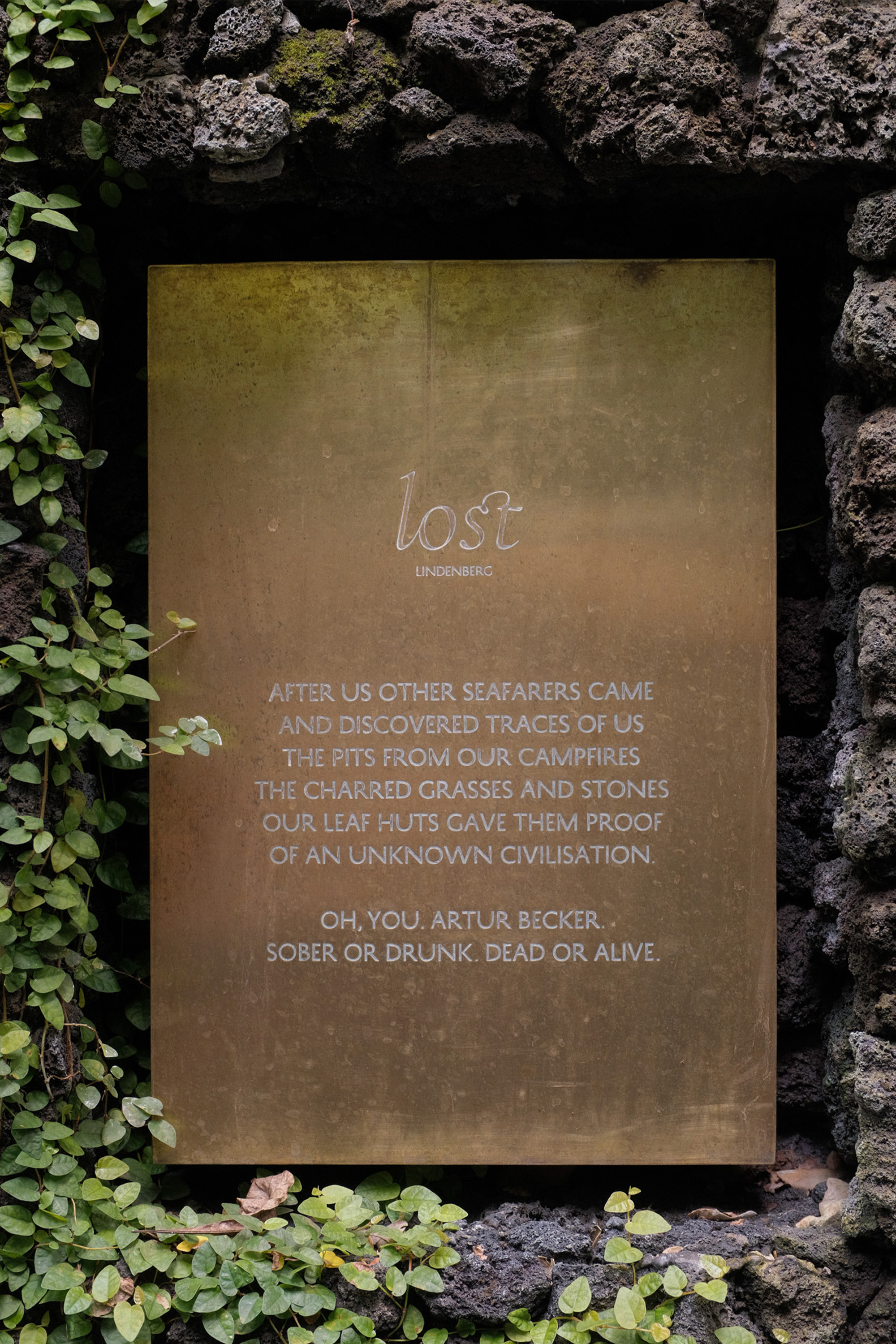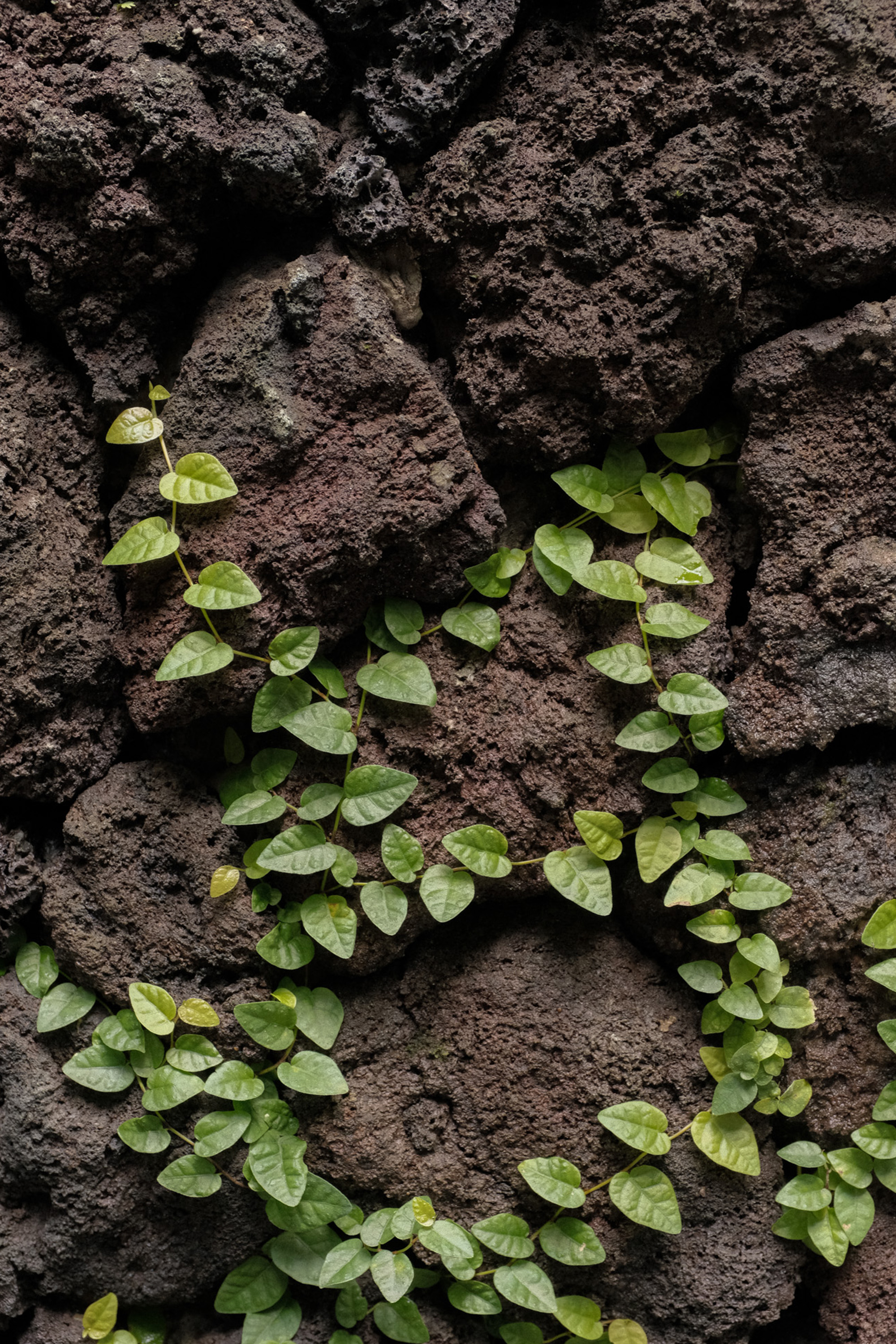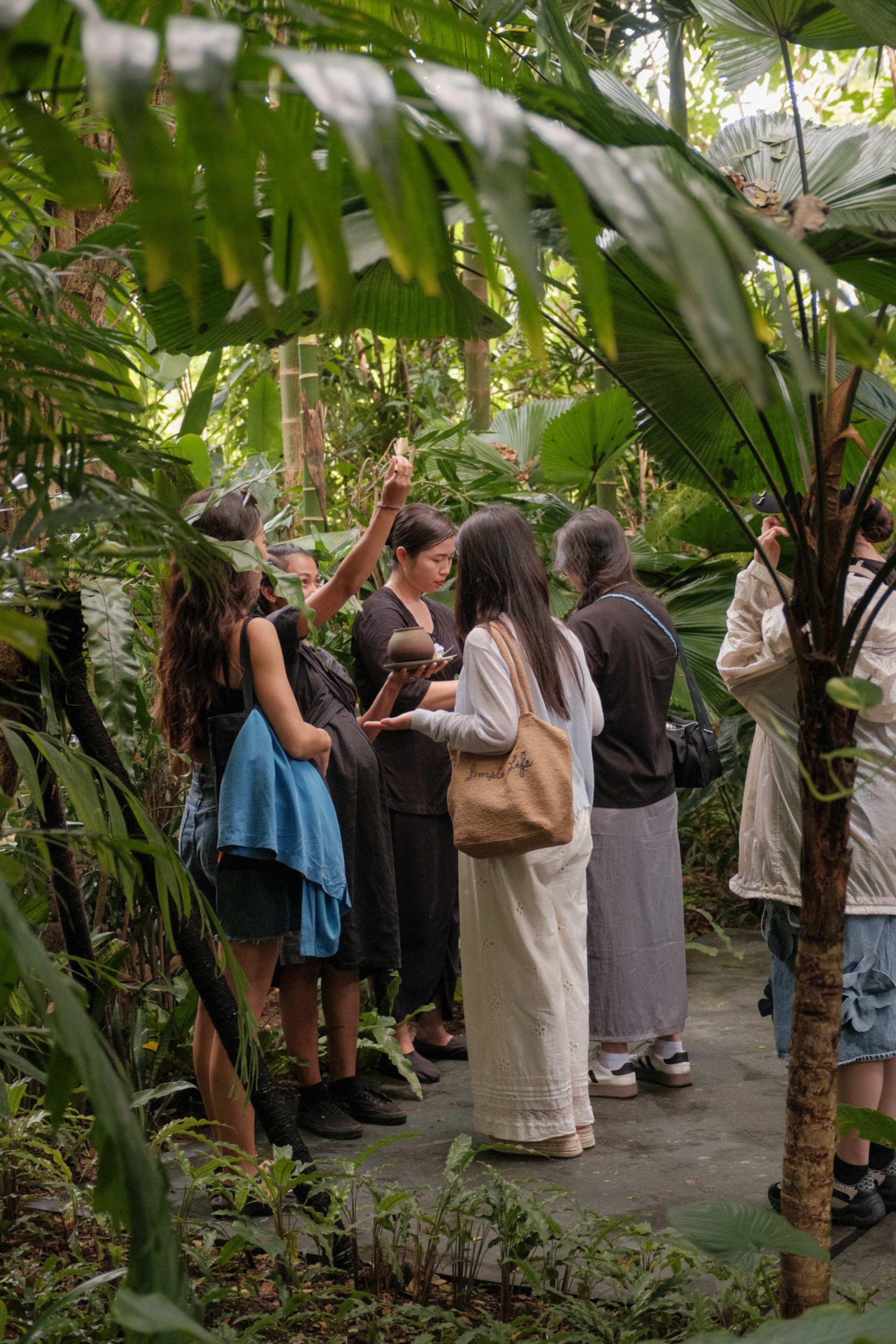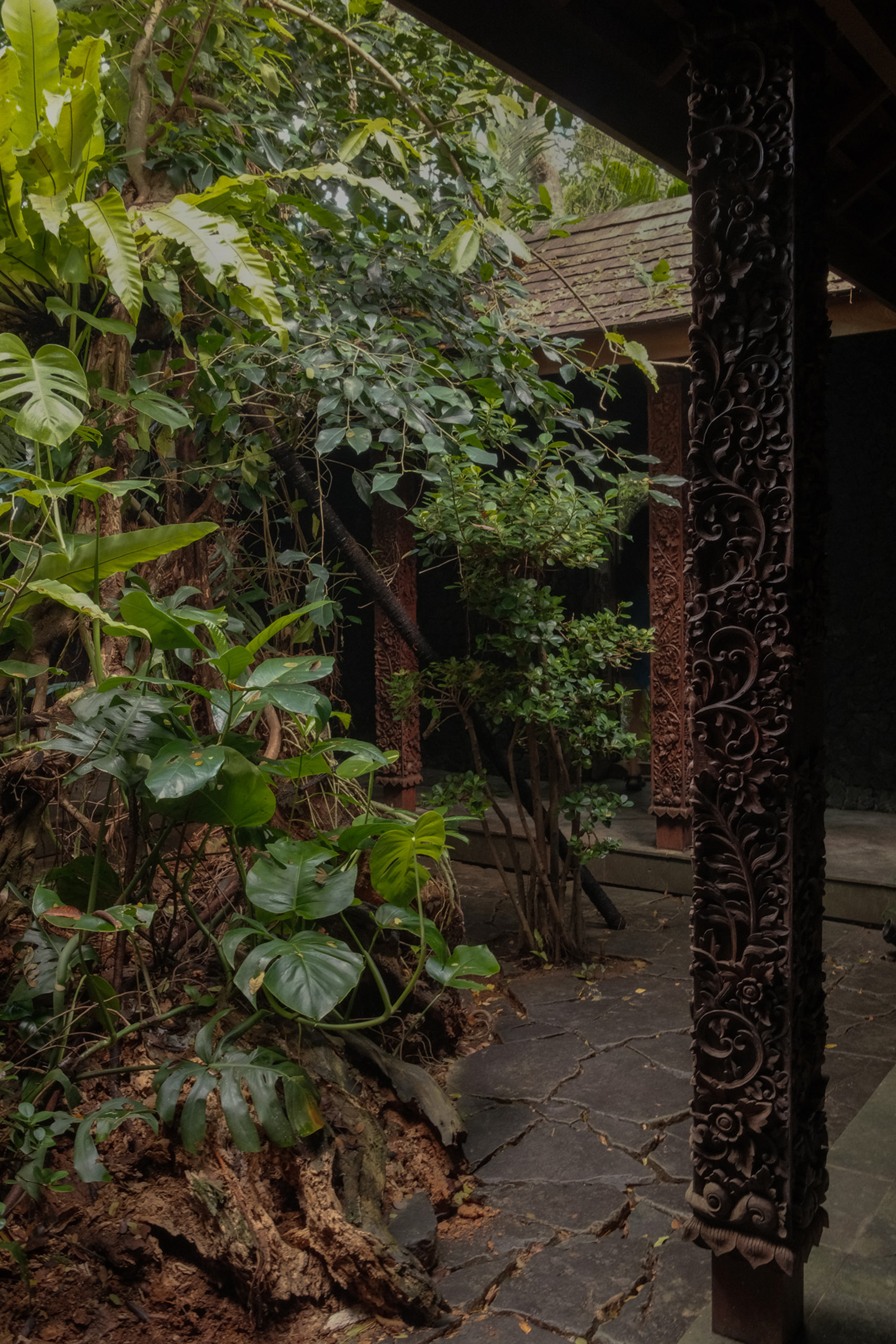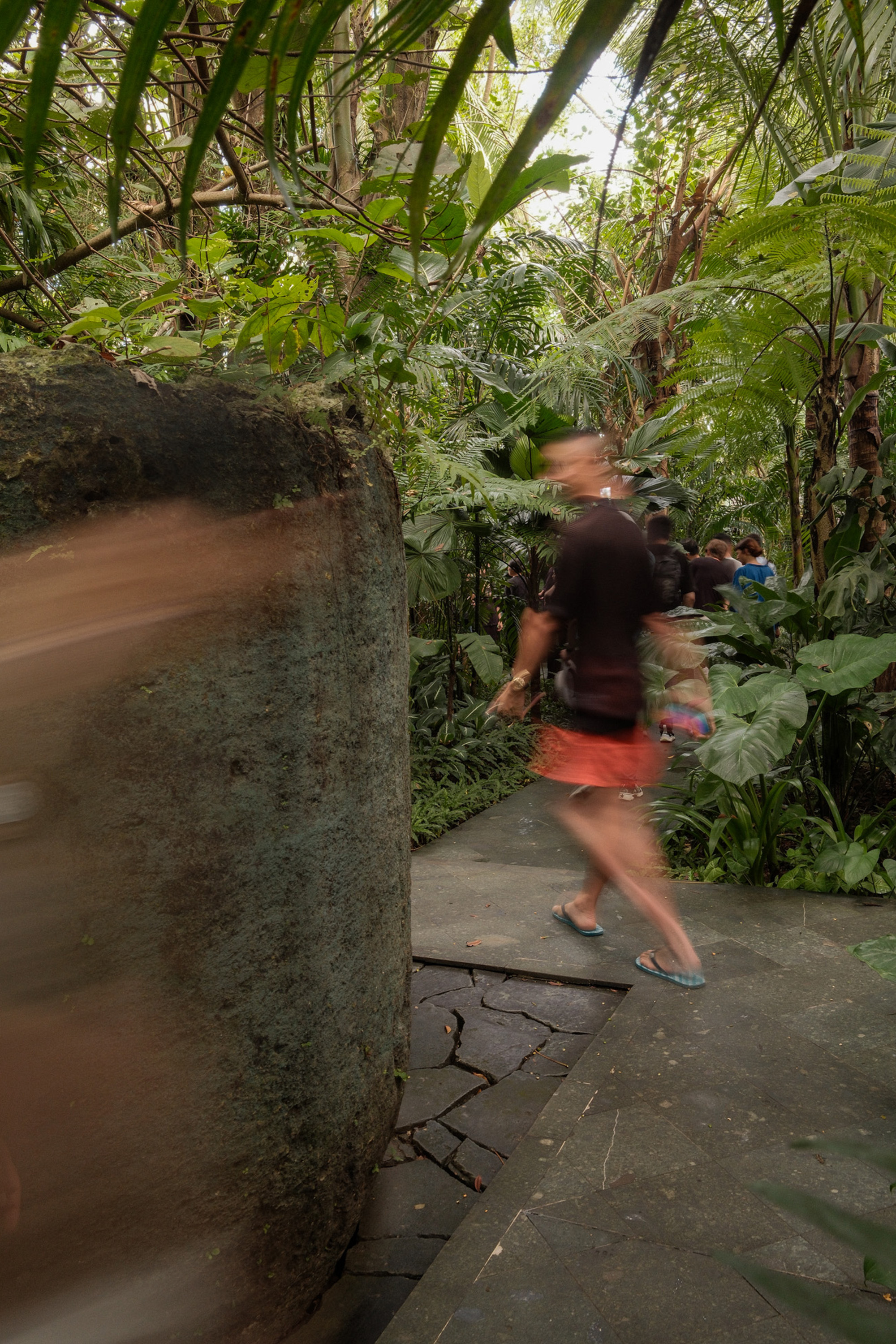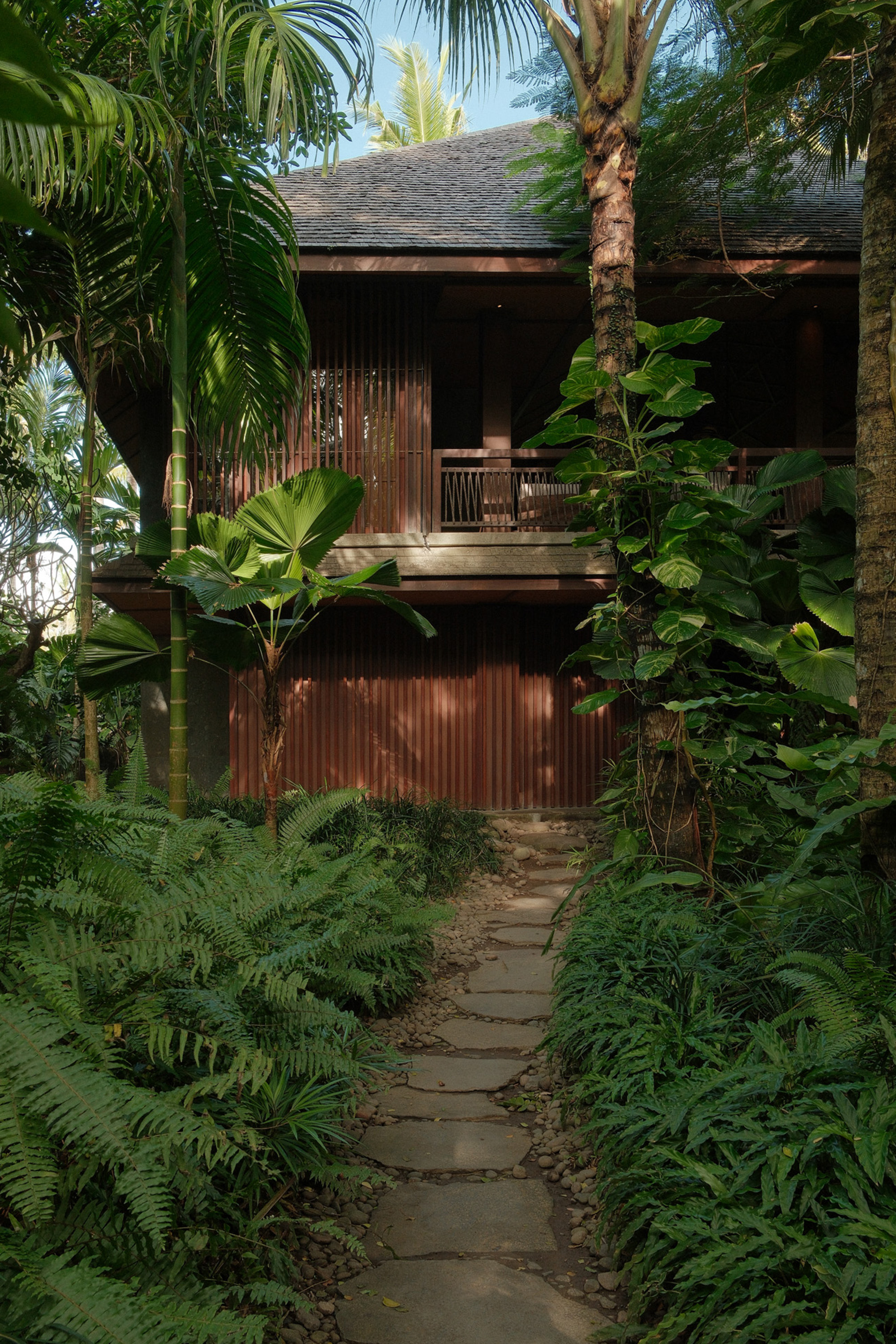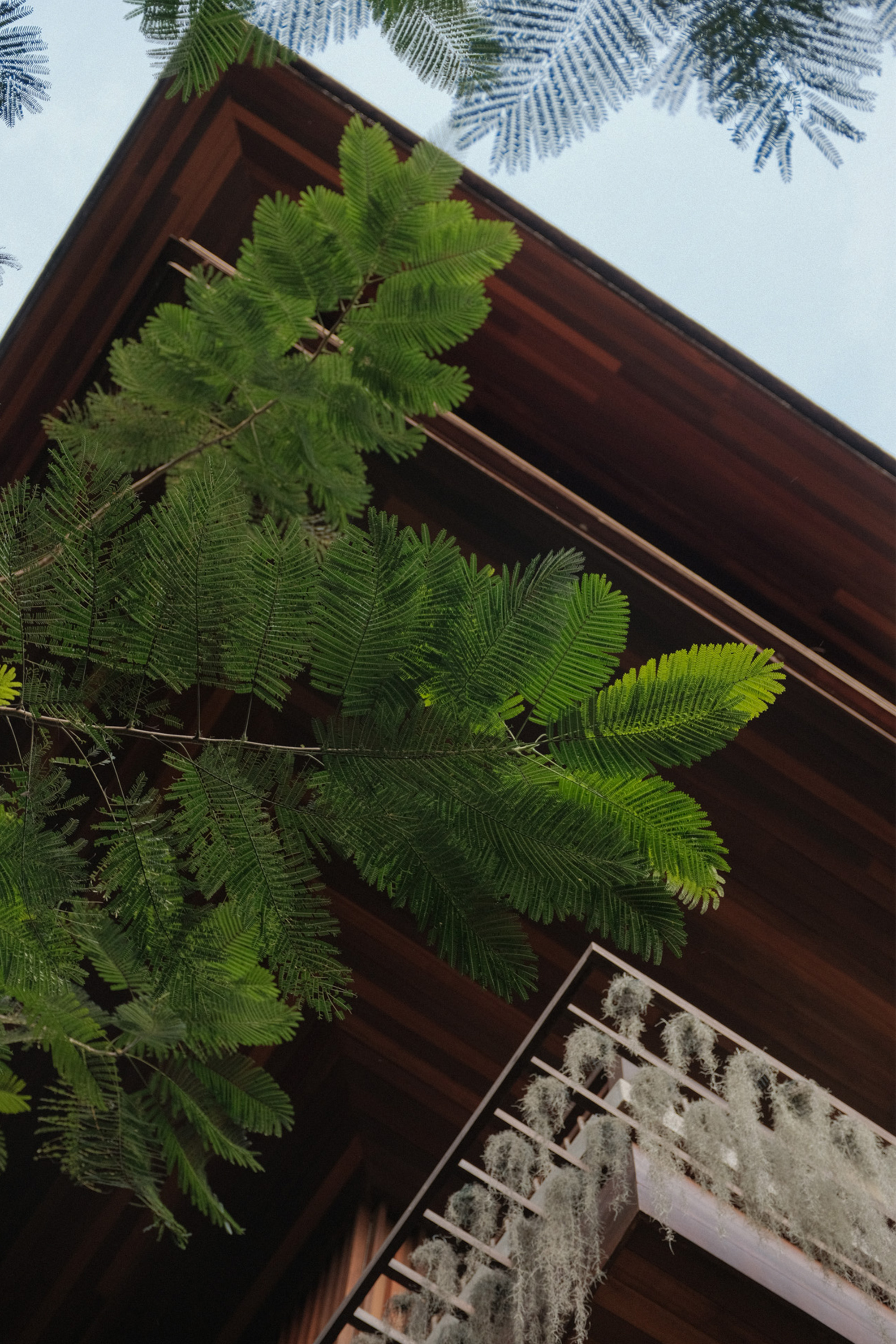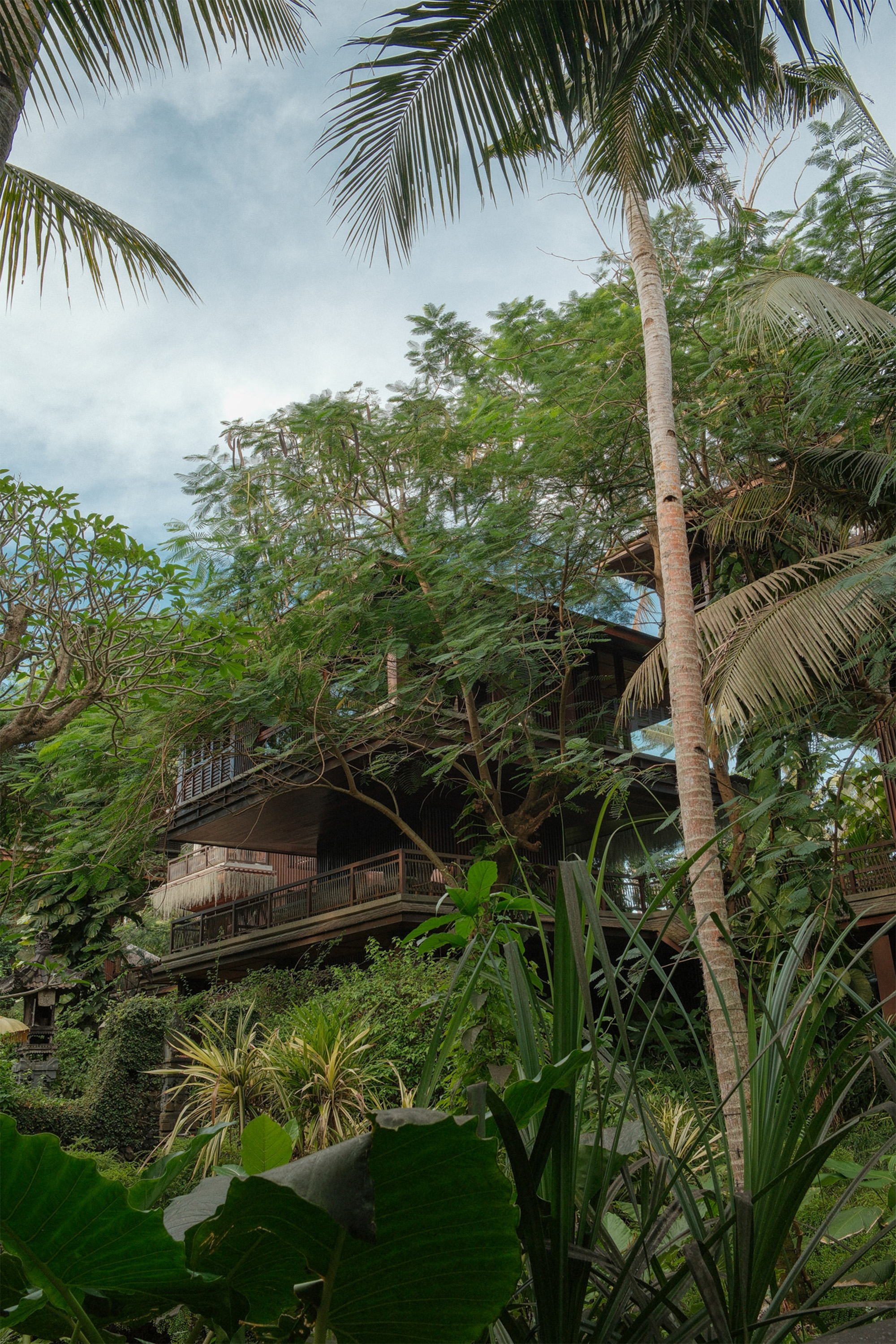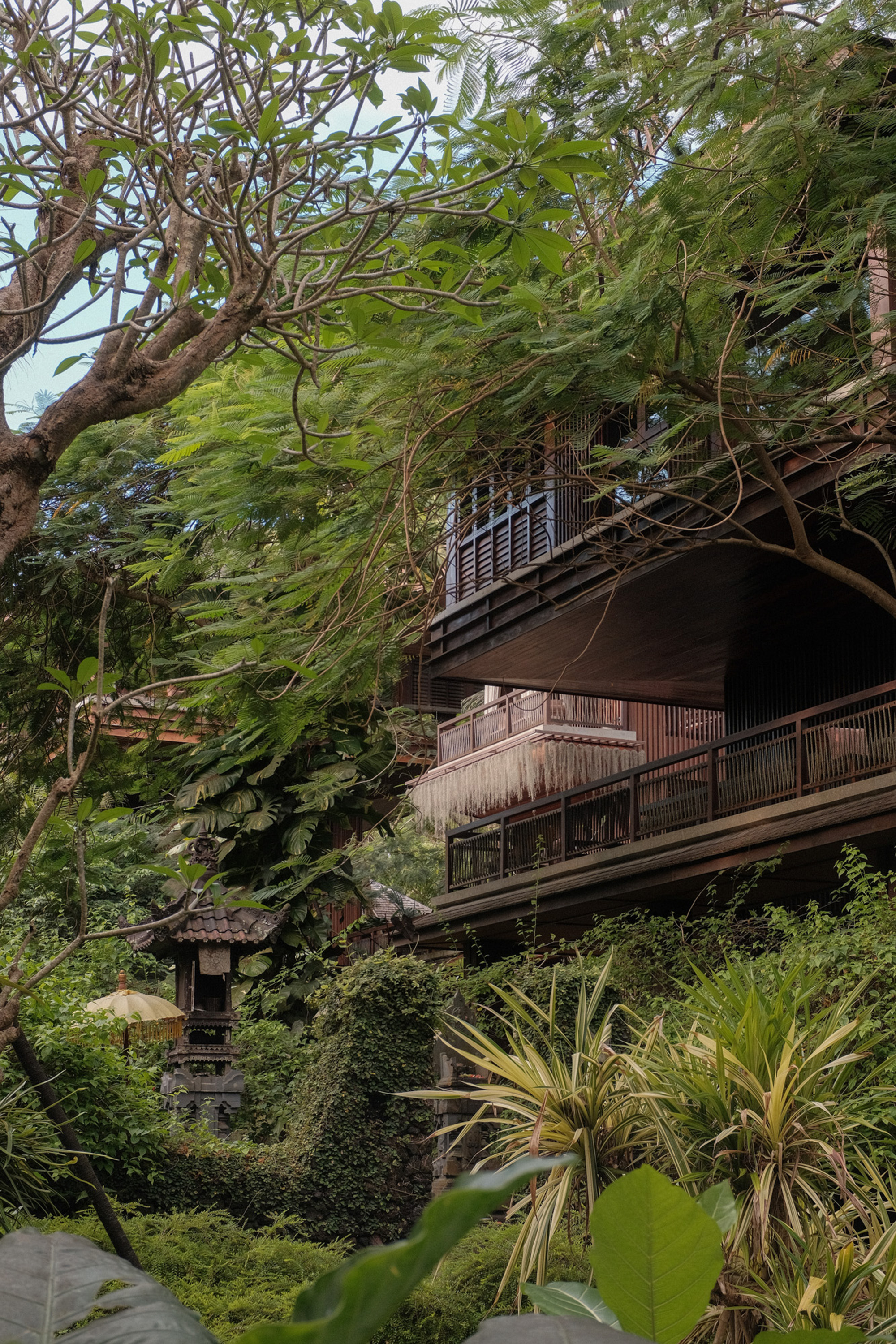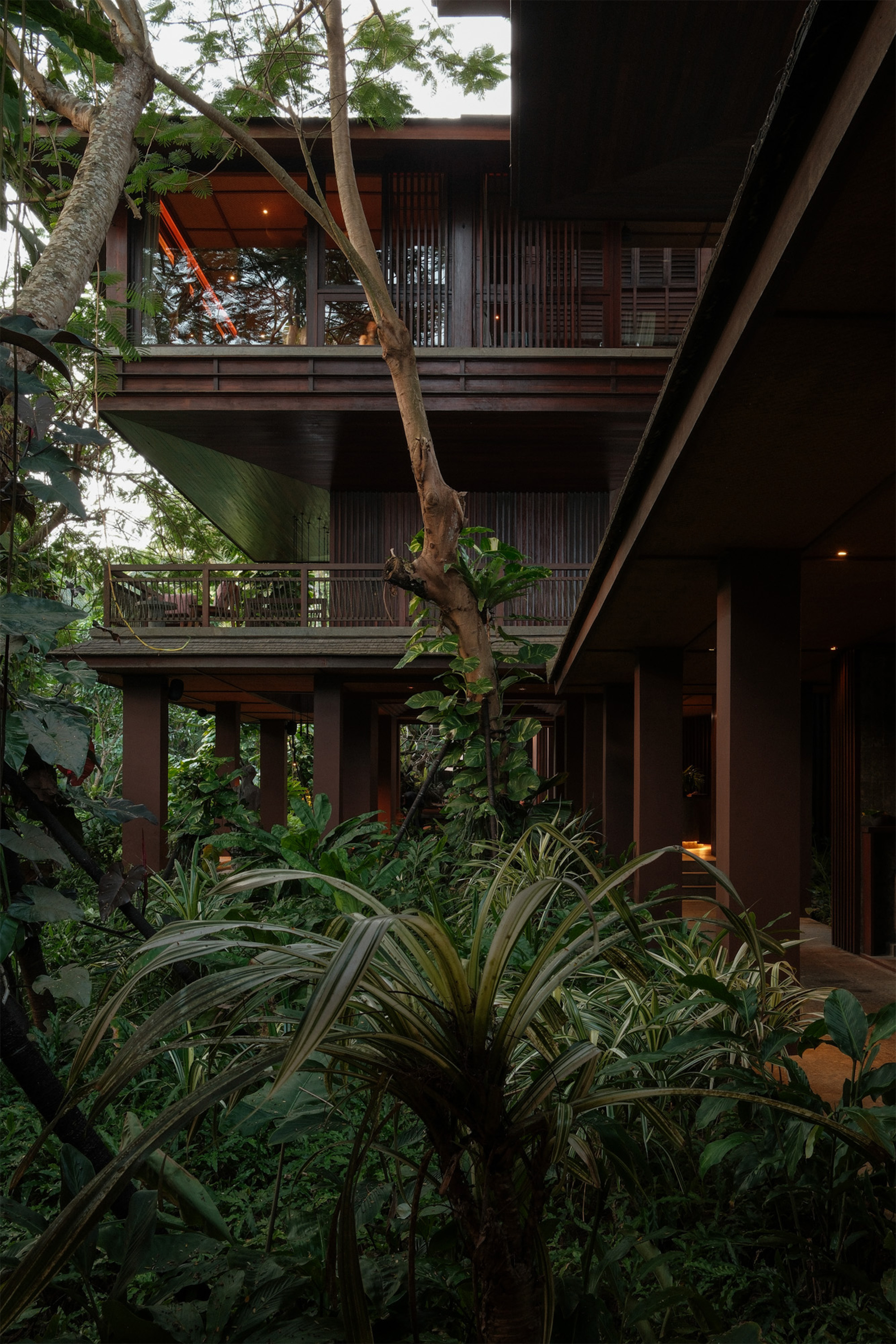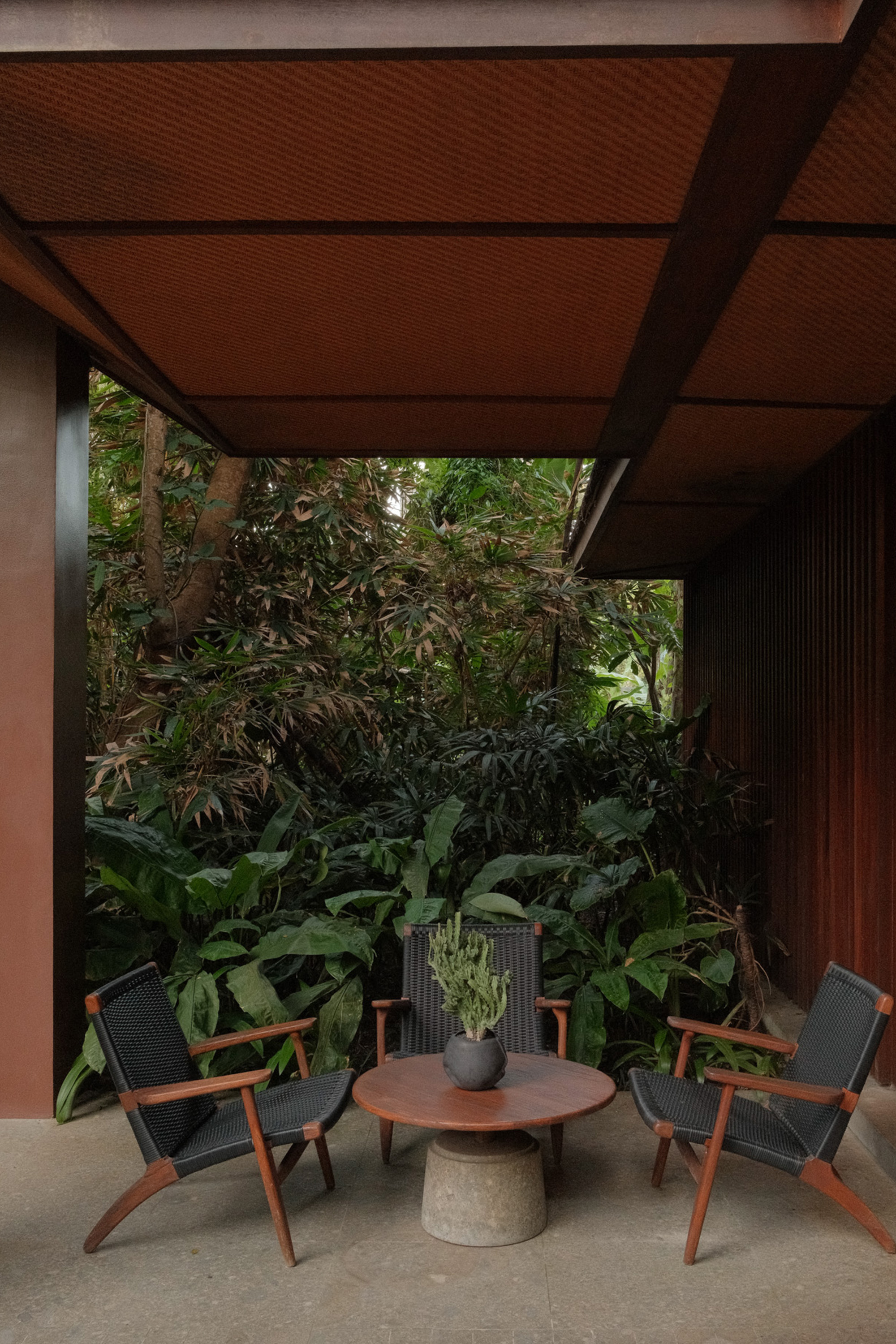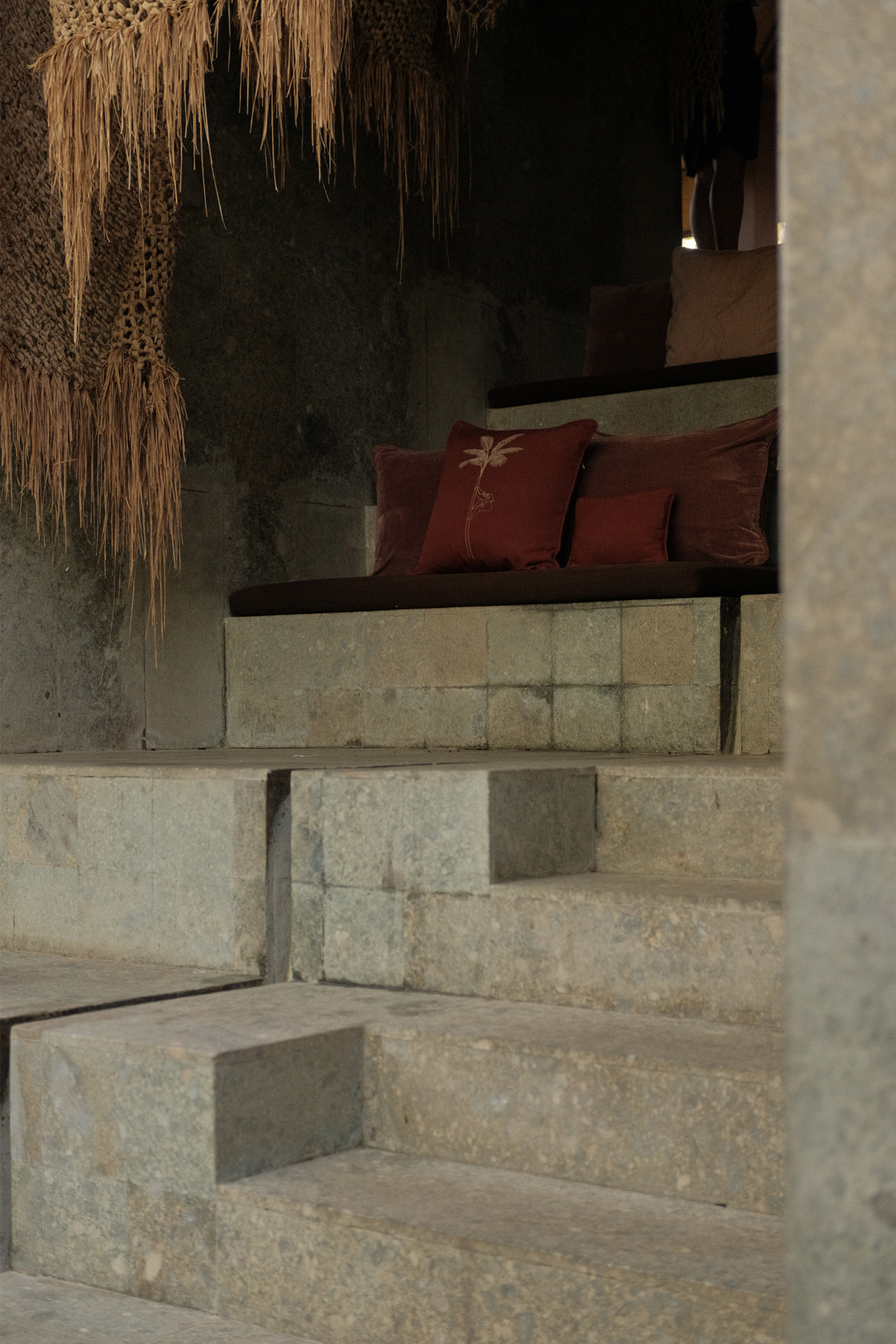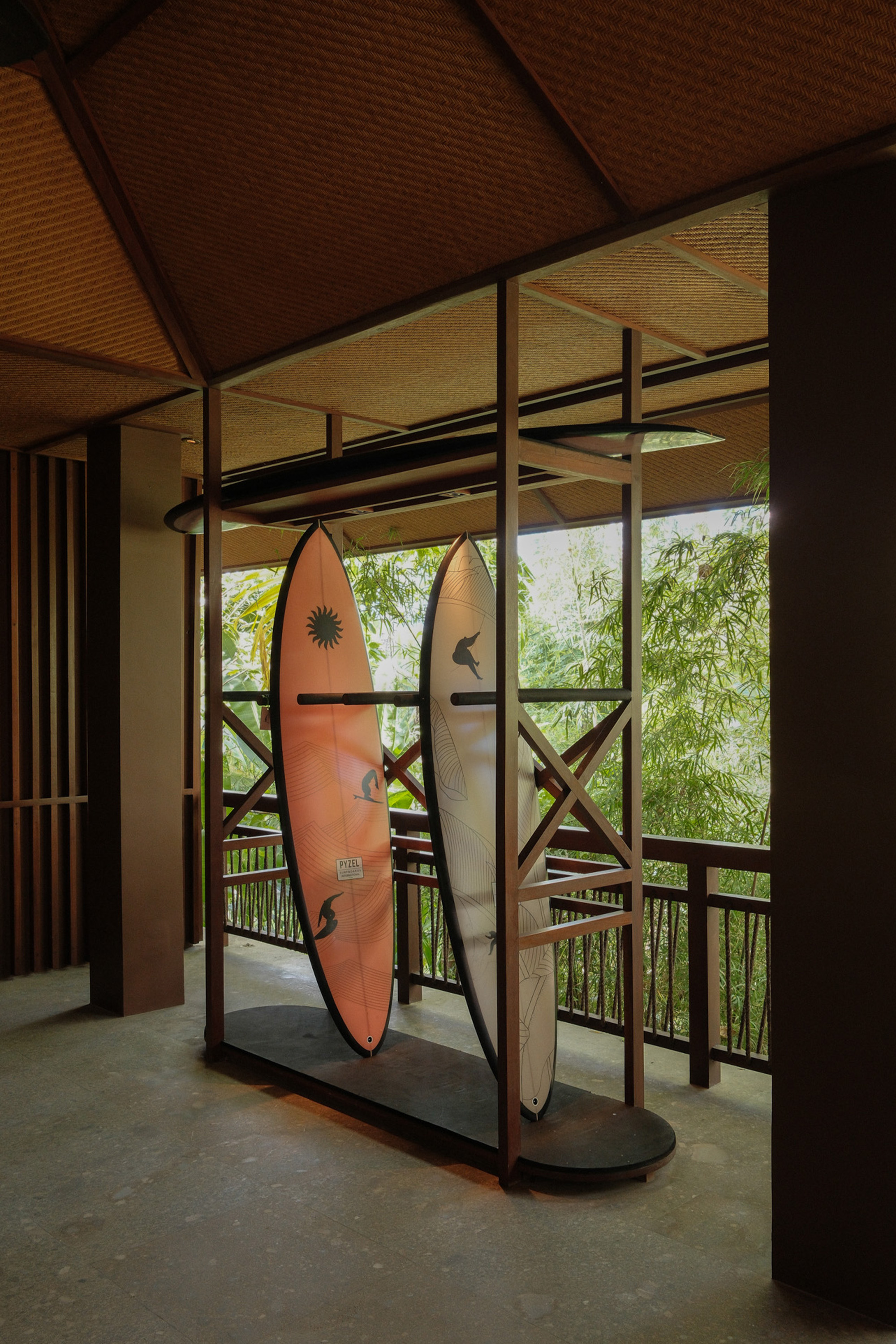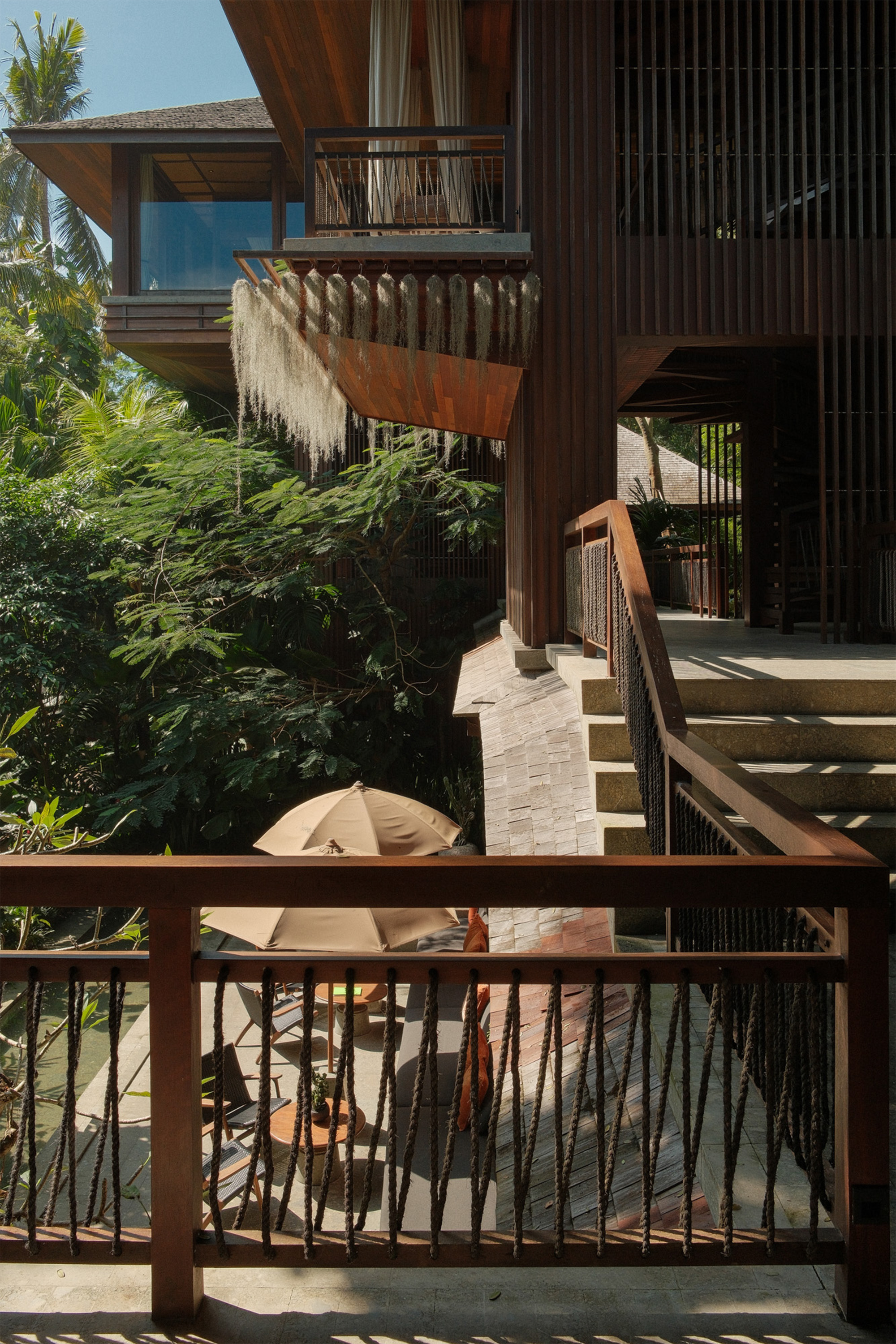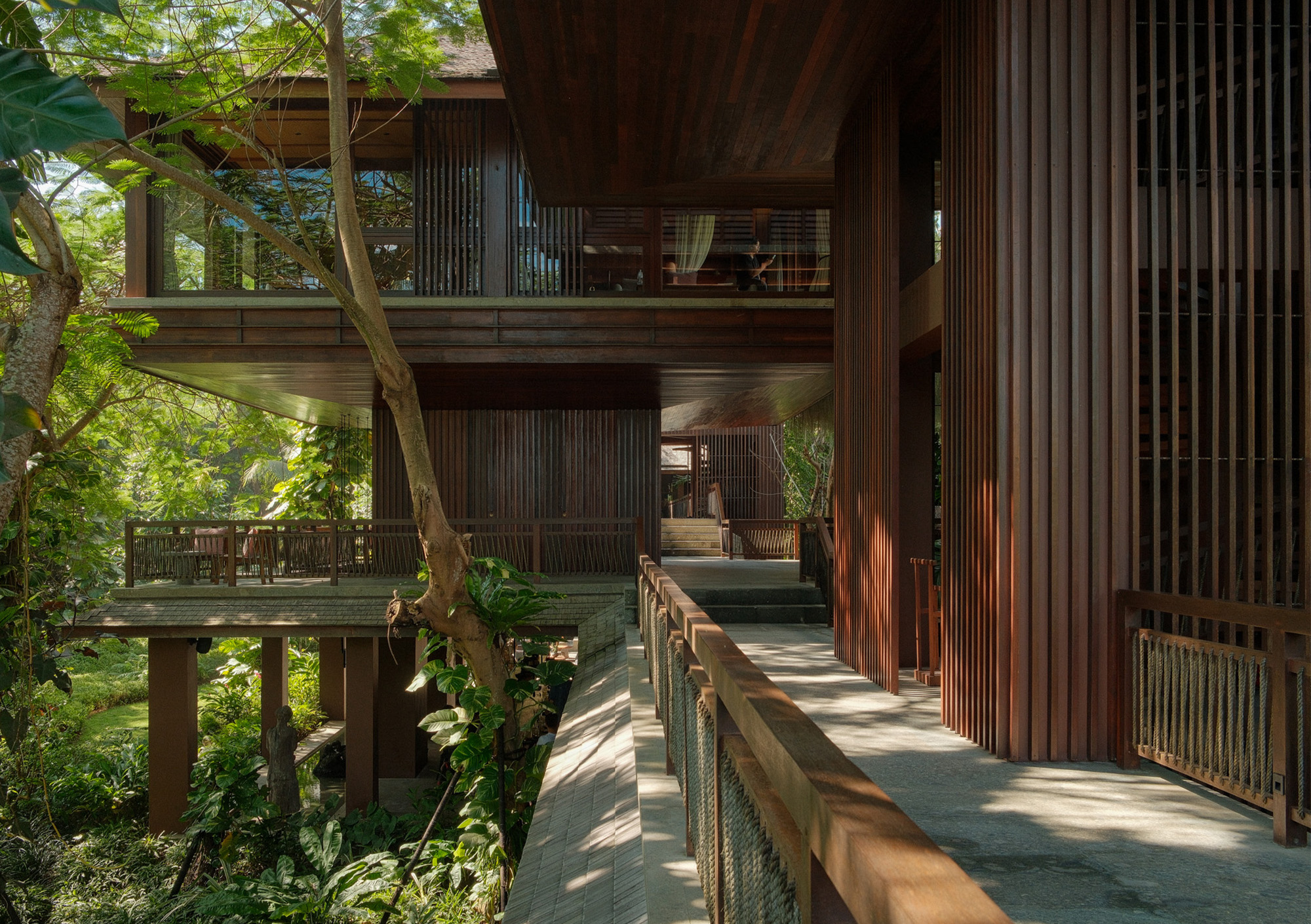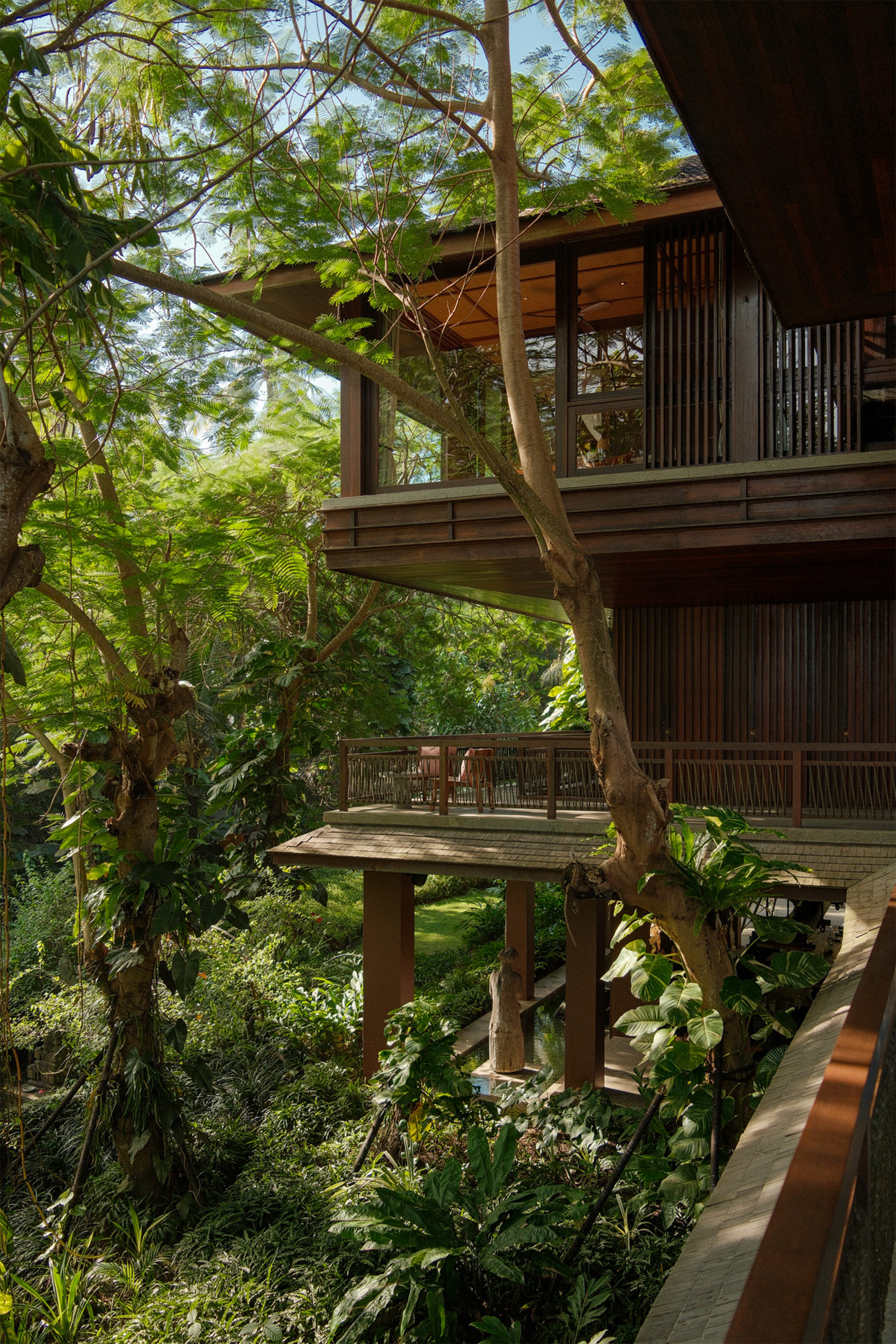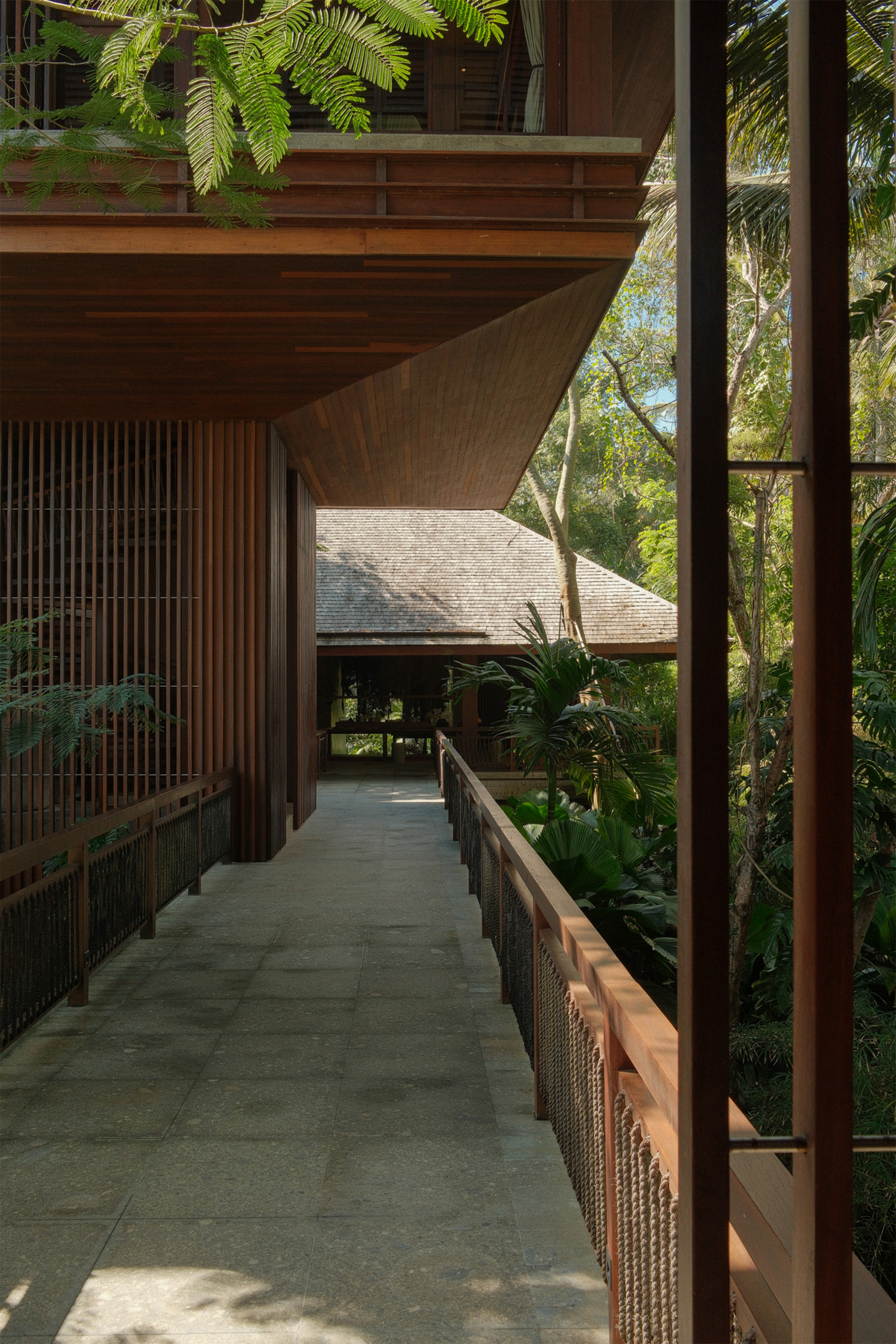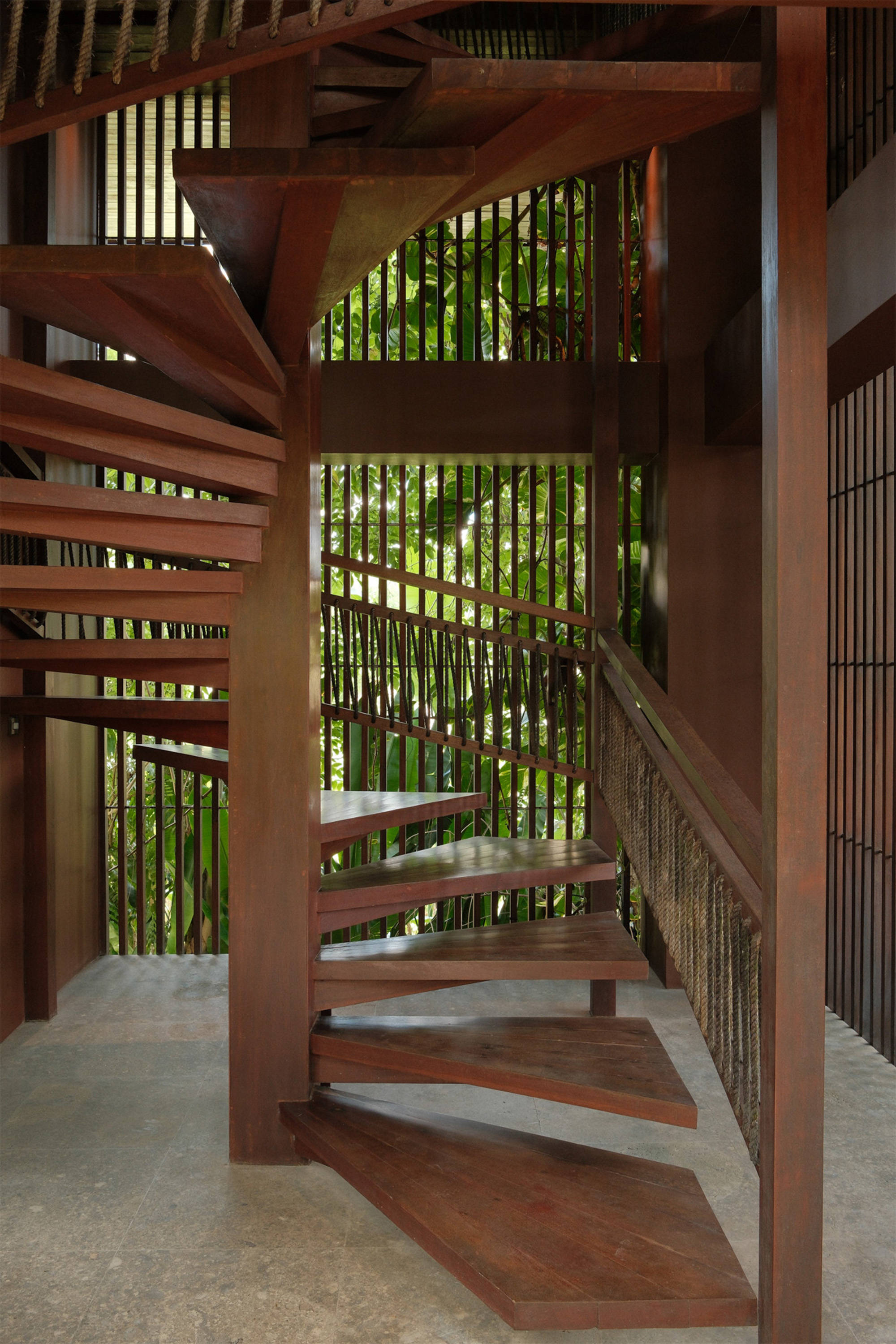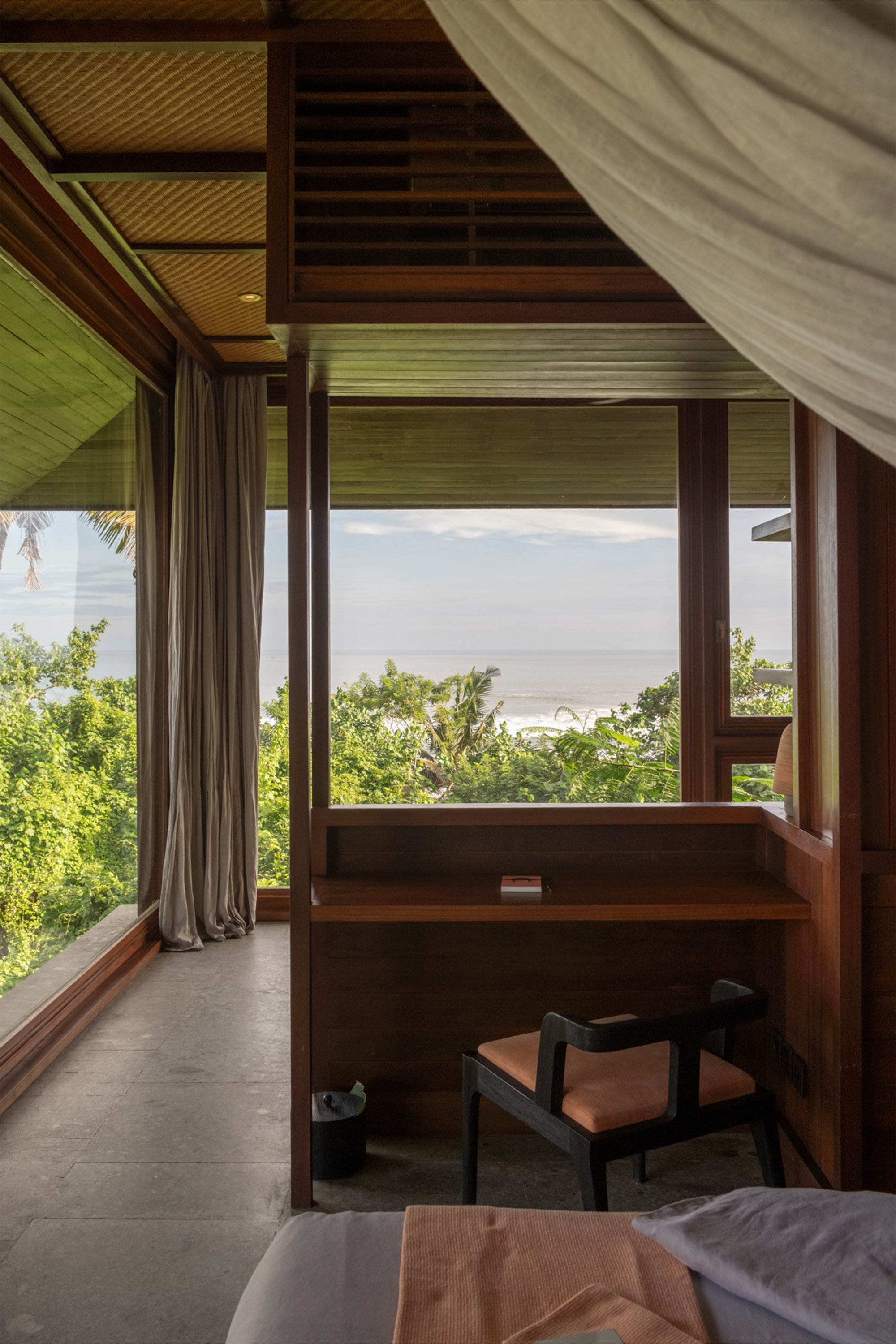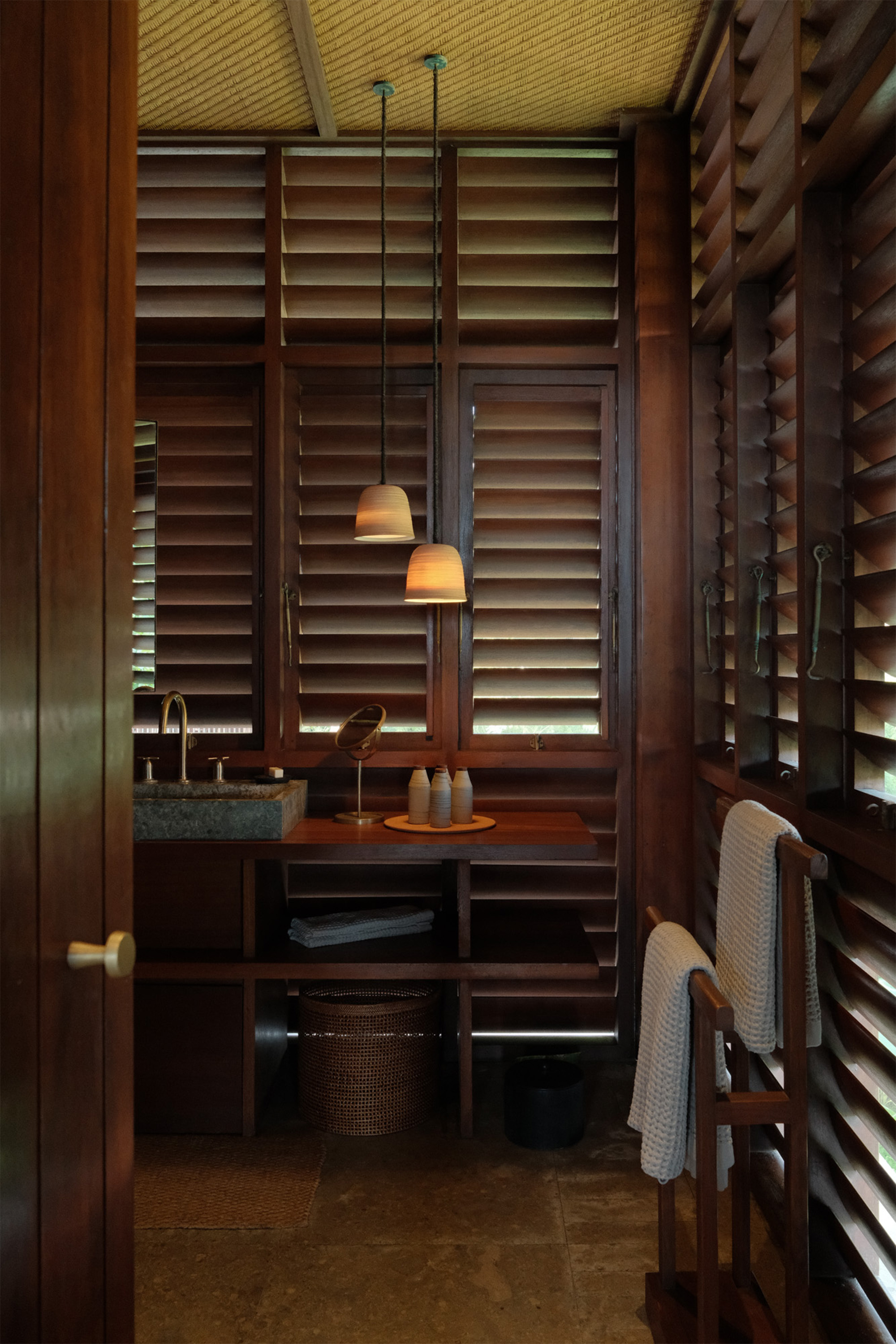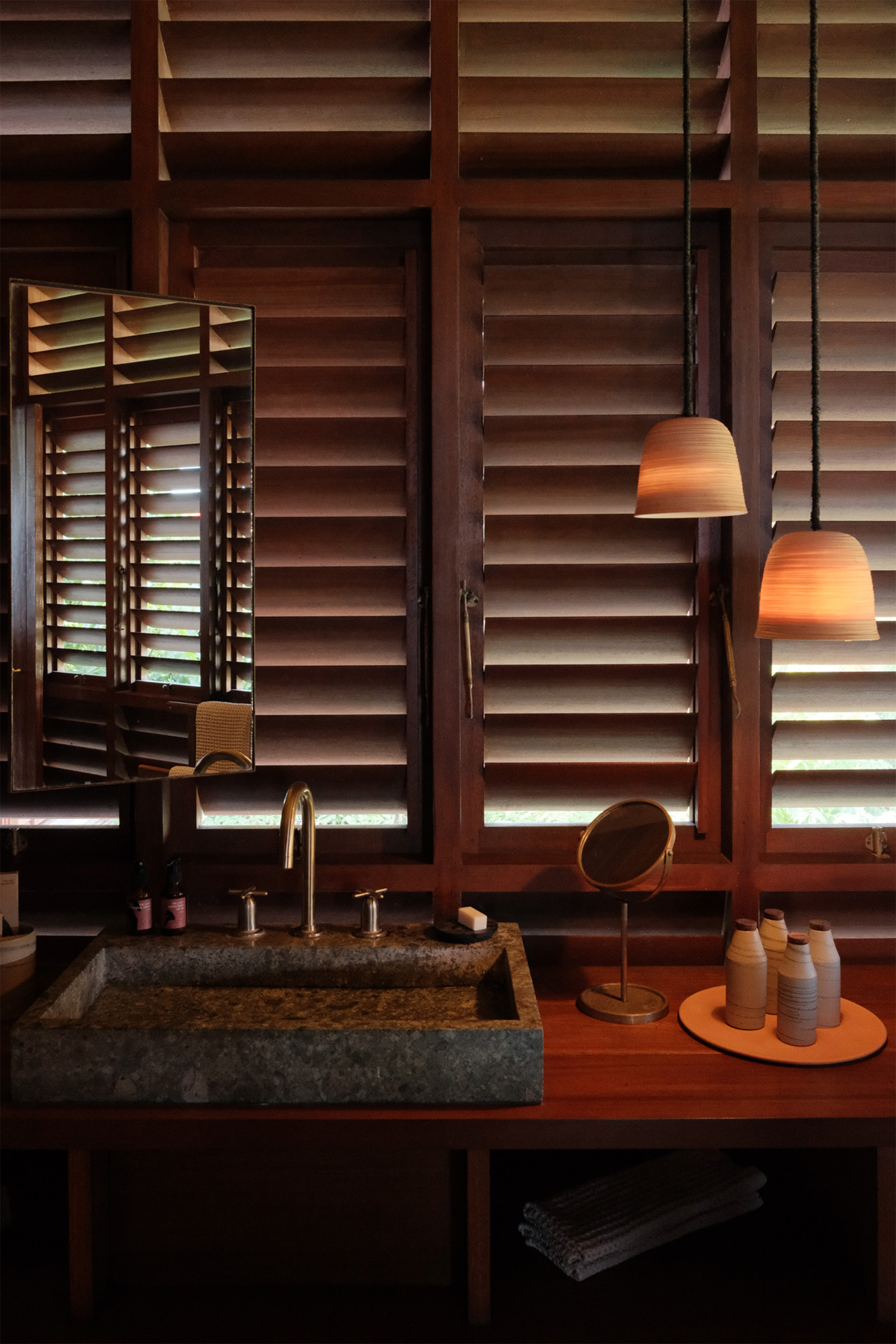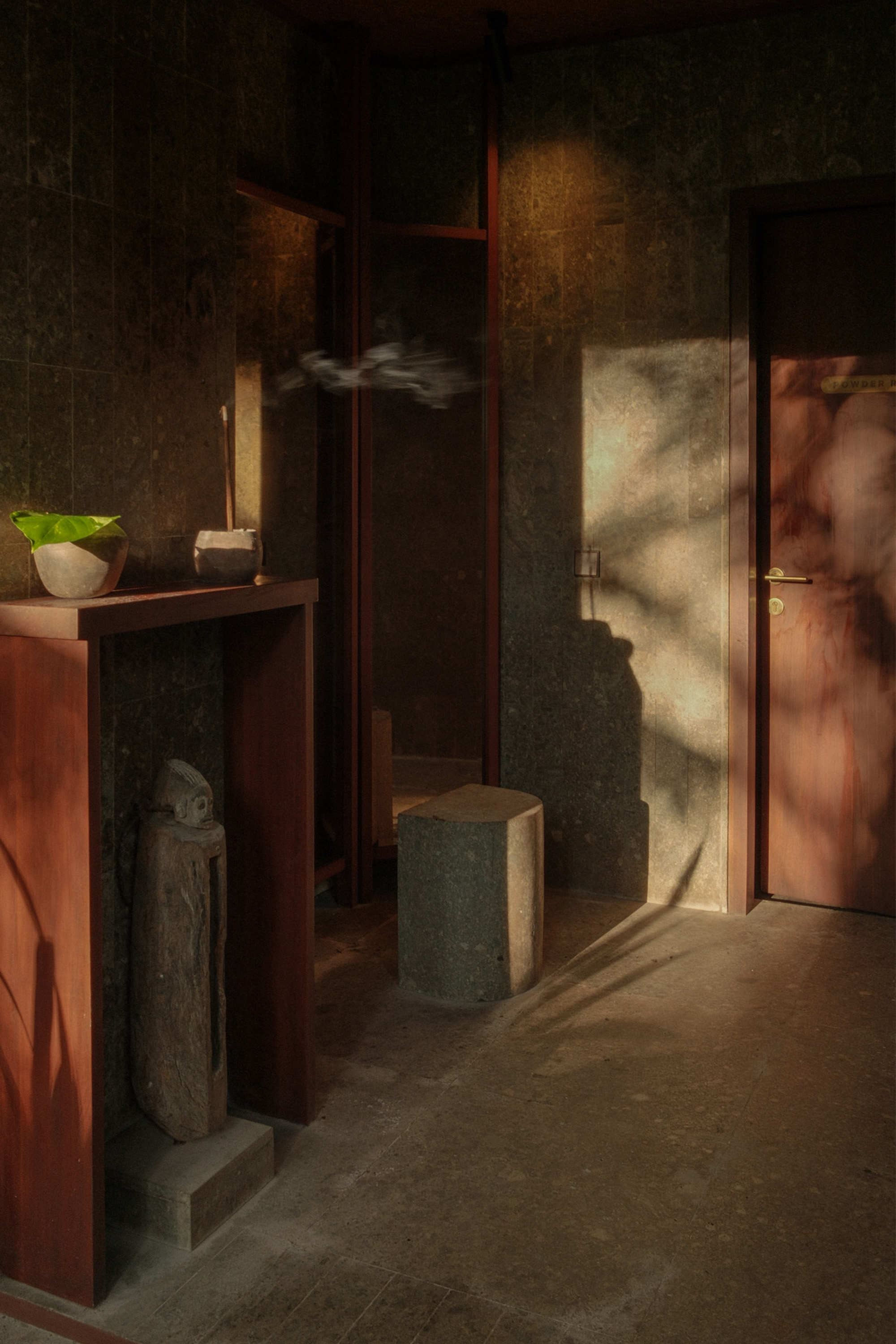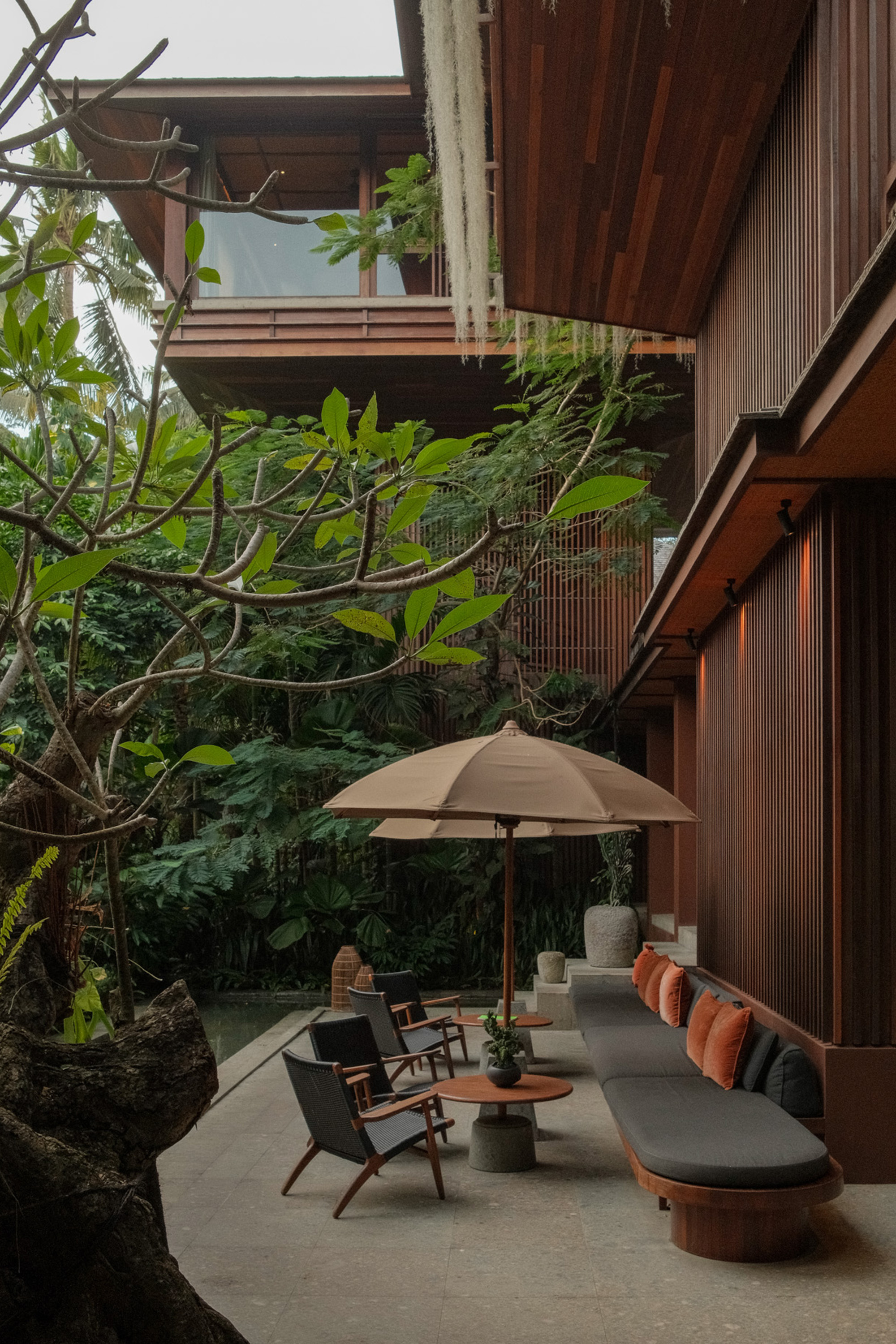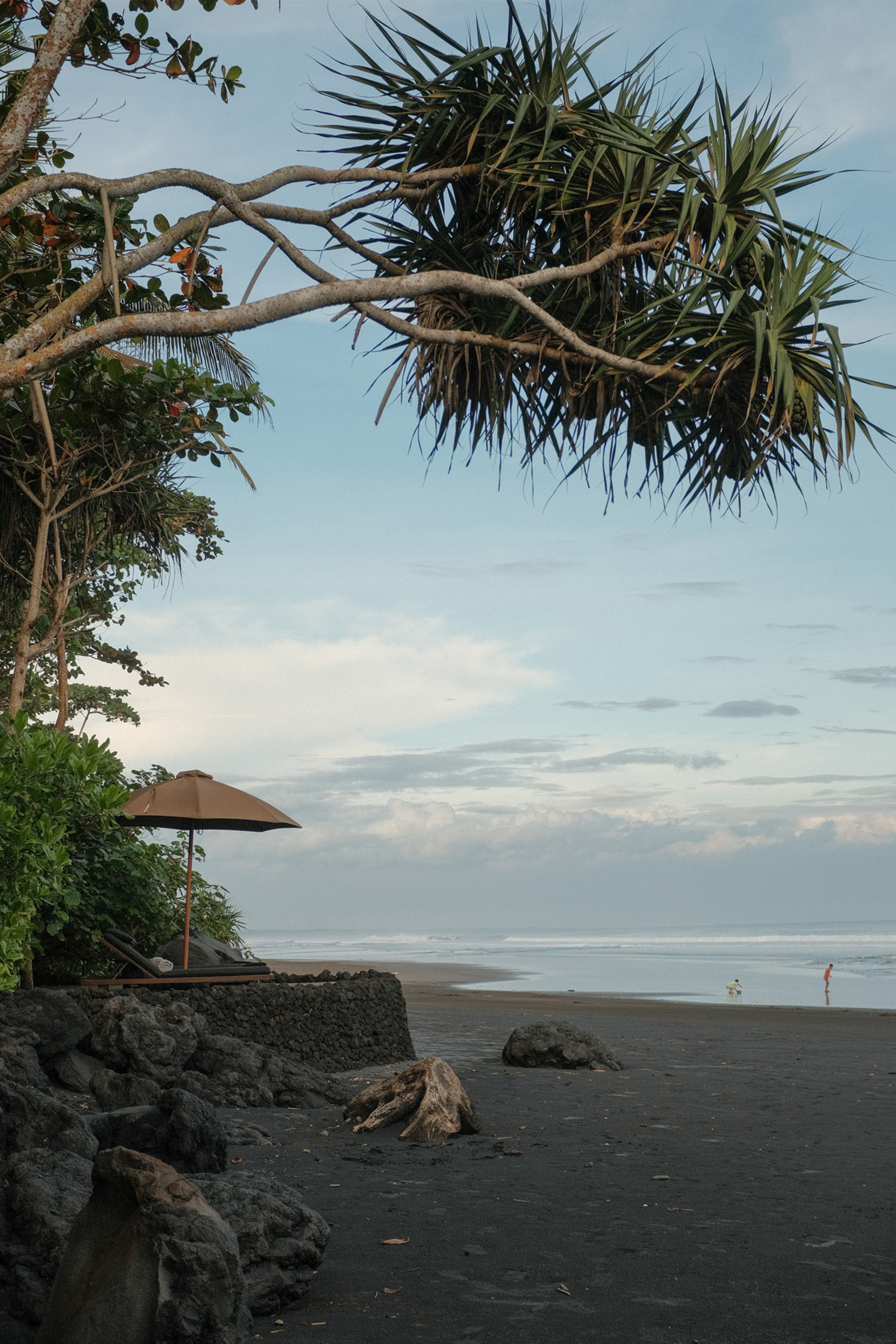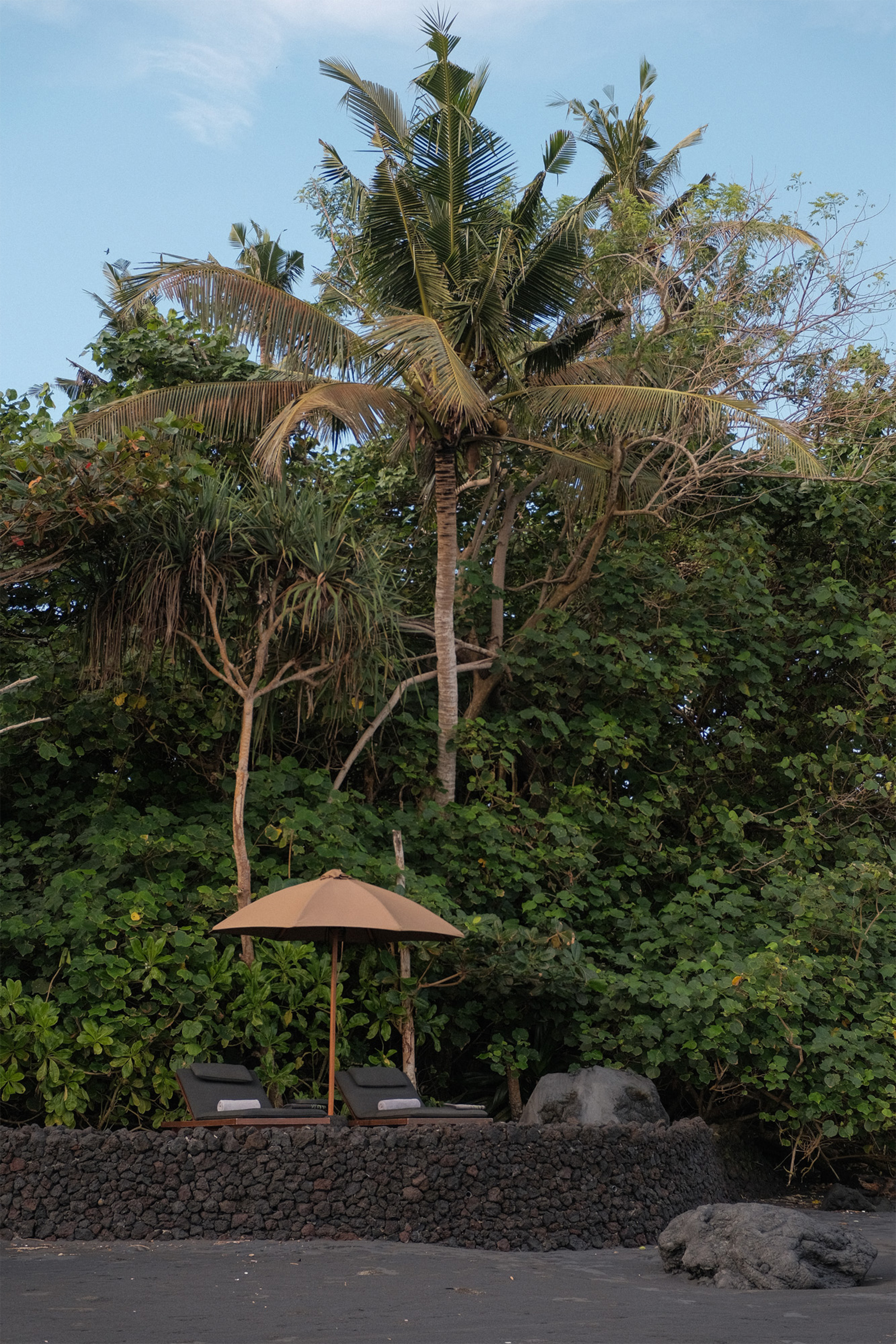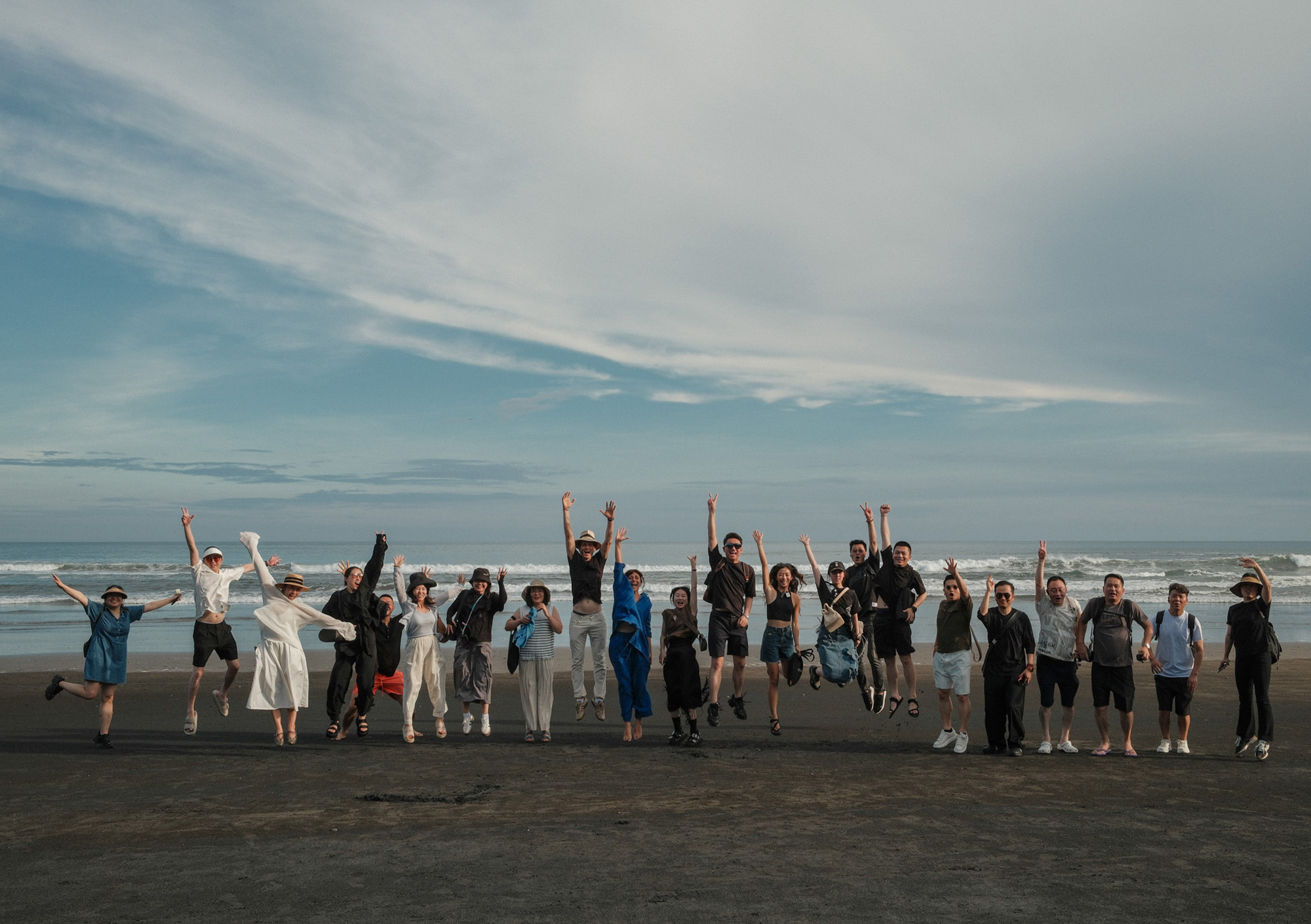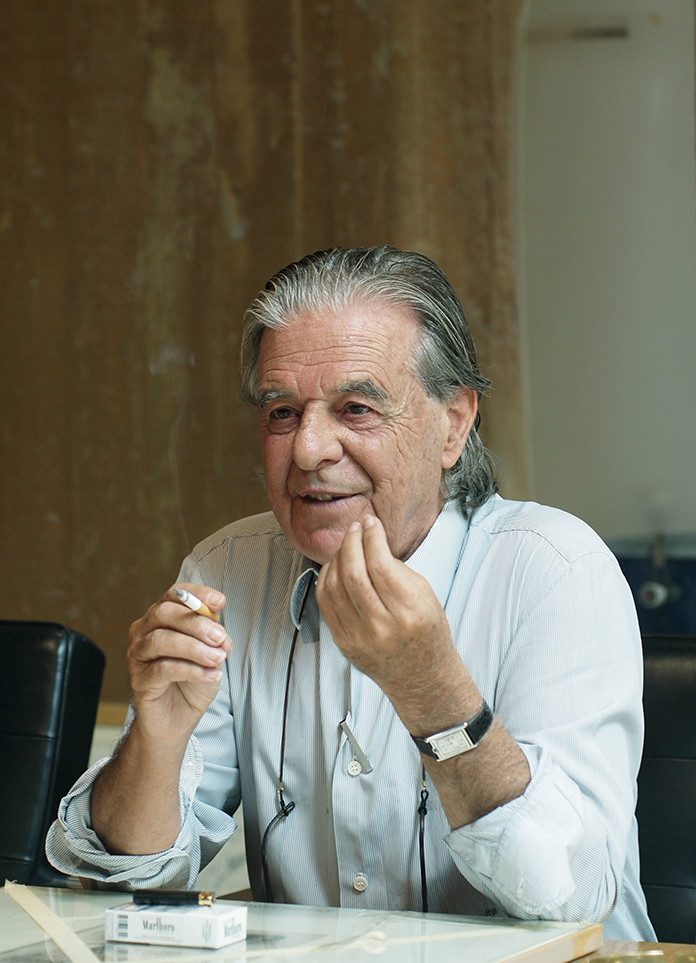Escape the hustle and bustle of the Balinese granaries and drive westward for three hours. The secret realm on the west coast gradually reveals itself. Lost Lindenberg, whose name is mysterious. At the entrance, a huge neon wall created by the German artist Tobias Rehberger, with its vibrant colors and light and shadow, becomes a striking prelude in the vast greenery. This is not a sudden announcement; rather, it is more like an alluring puzzle thrown by the forest leading to another world. Passing through the hidden small door on the installation wall, a winding path leads us into the heart of the tropical rainforest. The welcome ceremony of the Lost team was steeped in the ancient warmth of Bali: cool holy water was sprinkled on the forehead to bestoish blessings, and cotton ropes symbolizing protection and good fortune were tied around the wrists. The murmur of the forest and the serenity of the ceremony instantly washed away the fatigue from the long journey.
Walking towards the forest, a small courtyard surrounded by black volcanic stones serves as a transition. Stepping up the steps, the hotel's "paperless" reception area comes into view. Here, there is no traditional front desk. Instead, there is a relaxed "home" : surfboards stand against the wall, vinyl records produce low white noises, and pottery from Jencquel Studio, surfing magazines and cultural and creative products from Lost are displayed randomly. As the owner Denise put it, "We deliberately concealed the 'work sense' of the check-in process, leaving only the warmth of being at home and the memory fragments about this place that can be taken away."
A vertical sky bridge named "Highline" has become the core thread running through the hotel, connecting four huge towers that have risen from the ground in a staggered manner. Architect Max shares the core concept: "In the mysterious jungle, create a dreamy experience of floating above the tree canopy." The tower was deliberately raised, like an ark moored at the top of a palm tree, allowing the residents to overlook the boundless sea view.






